Collection overview
The Eric Raff 1924 Efate, New Hebrides Cylinder Collection (C83) is a set of twelve black wax cylinders recorded in 1924 at Port Vila on the island of Efate in Shefa Province, Vanuatu, formerly known as the New Hebrides Condominium. The collection was previously known as the RAI Vanuatu Cylinder Collection. Research conducted by the True Echoes team has ascertained that the recordist was Eric Maitland Kirk Raff (1892–1927), an Australian Presbyterian missionary who was based at Port Vila on Efate from 1917 to 1924.
The collection comprises 12 cylinders, but only nine have been digitised as three are badly broken. The accompanying documentation indicates that there were originally 30 songs recorded. Various performers are noted in the documentation; there is more information about the performers below.
The records noted the name and village of each performer, e.g., Miriam of Malavau. The village names, Malavau, Leleppa, Meli, Fila, and Pango, indicate that the performers came from various villages on the island of Efate or islands just off it. Malavau / Malafau is a small village about 2 km inland from Havannah Harbour on the north coast of Efate, near the Marona River. Leleppa / Lelepa is an island just off the north coast of Efate that forms part of the Port Havannah / Havannah Harbour area, where the first large European settlement on Efate was founded in the 1860s. European activity shifted focus to Port Vila in the 1880s. There was an early Presbyterian mission at Samoa Point in Havannah Harbour; the missionary Daniel Macdonald was stationed there from 1872 to 1908 (Thieberger 2004:32). There were mission teachers on Lelepa from the 1850s.
Meli refers to the island of Mele, in Mele Bay on the west coast of Efate. It was inhabited by Mele people up until 1950 (Naupa 2004:40), after which the village moved to the mainland of Efate. Fila refers to the island of Ifira in Vila Harbour; both Mele and Ifira are Polynesian outliers. Ifira and Mele people speak dialects of the same language, Mele-Fila. Pango is a village and area on the west coast near the capital Port Vila; it was also the site of Presbyterian mission activity from the 1850s (Thieberger 2004:33).
The accompanying documentation contains both transcriptions and translations of many of the songs, and these include mentions of a number of other places, including the island of Emai / Emae. Almost all of these are in Shefa Province, but one song or story is noted as being from the island of Pentecost.
Research by Vicky Barnecutt, British Library.
Recordings
The recording metadata below includes the information written on the cylinder box, both lid and base. It also includes the information from the Records list and accompanying notes, the original documentation that came into the British Library with the cylinders. The British Library performance note, by the sound technician who dubbed the recordings, is also included in the metadata below. We have added the probable language of the recording, based on the information in the original documentation, including the IS0 639-3 code.1SIL International is now the registration authority for ISO 639-3 – https://en.wikipedia.org/wiki/ISO_639-3
Transcriptions and descriptions of each of the songs as typed up by Ruth Raff can be found on the Song Texts page.
Some text has been redacted due to cultural sensitivities identified during community consultation.
| British Library shelfmark | Recording title | Performer name | Recording location | Recording date | Content description | Performer description | Recording notes | Languages | Genre | Recordist | Recording length | Recording trip | Description of cylinder | Collection title | Cylinder location | Images of cylinder containers / documentation | Related print publication: | Related print publication: | Related print publication: | Related print publication: | Related print publication: | Related print publication: |
|---|---|---|---|---|---|---|---|---|---|---|---|---|---|---|---|---|---|---|---|---|---|---|
| C83/1498 | Iakokae-Iako / Miamielu | Miriam of Malavau (singer, female) | Port Vila, Efate, New Hebrides Condominium | January 1924 – June 1924 | 1. The song to warn Iakokae-Iako. Solo female vocal, unaccompanied. 2. Miamielu: solo female vocal, unaccompanied. | From Malavau (Efate), Vanuatu | Reasonable recording | Raff, Eric Maitland Kirk (1892-1927) | 3'56" | Eric Raff, 1924 | Black wax cylinder | Eric Raff 1924 Efate, New Hebrides Cylinder Collection | British Library |  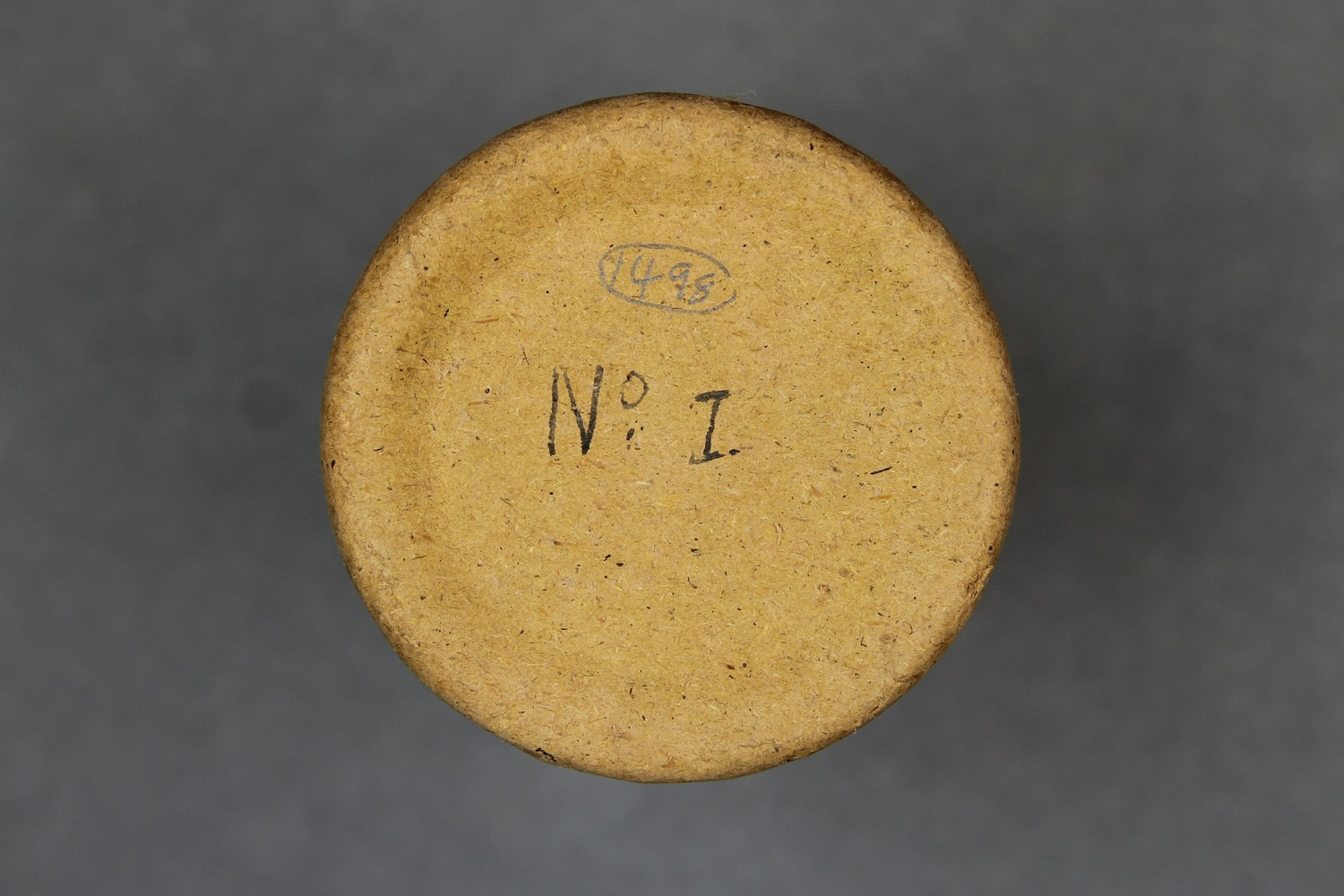 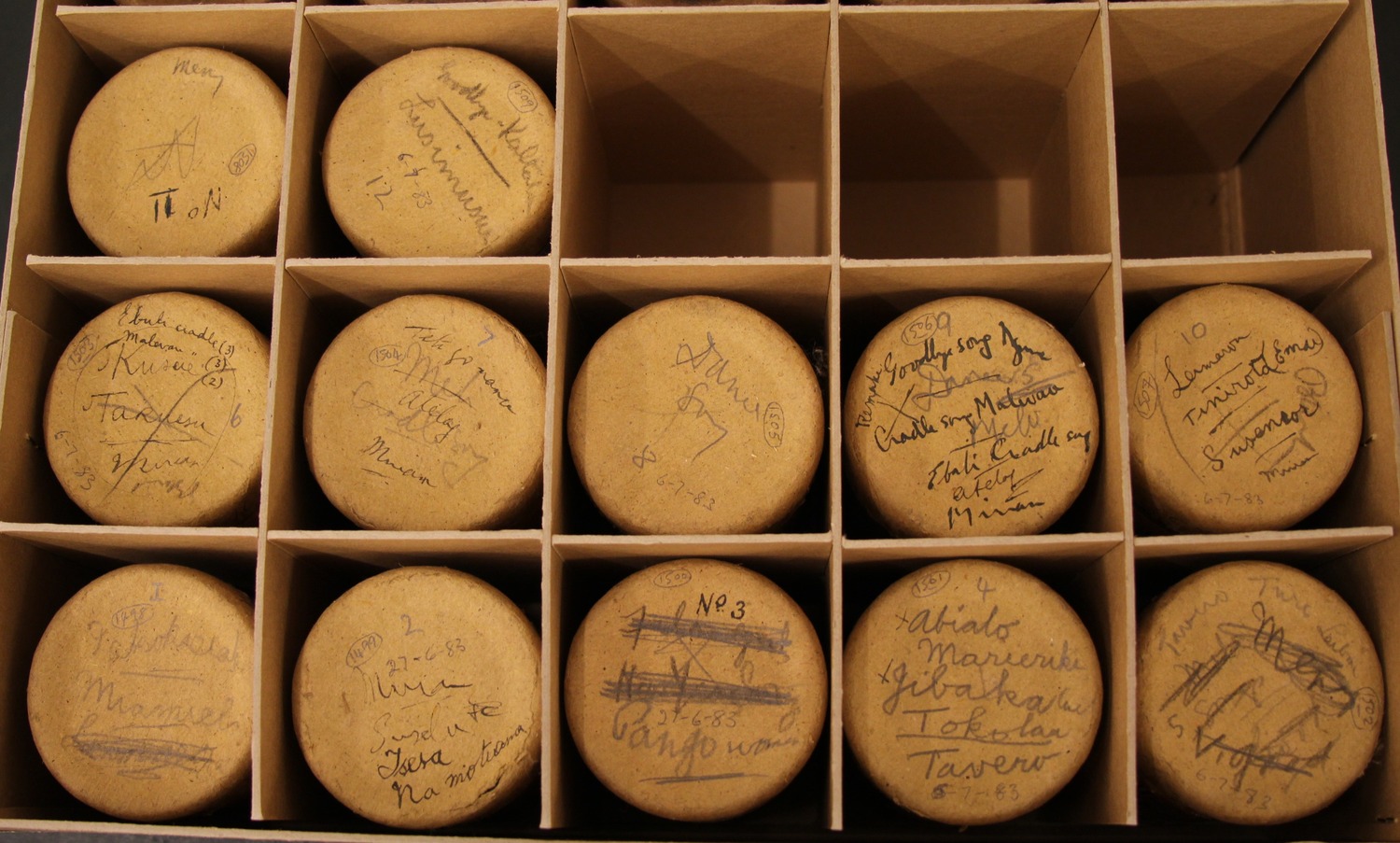 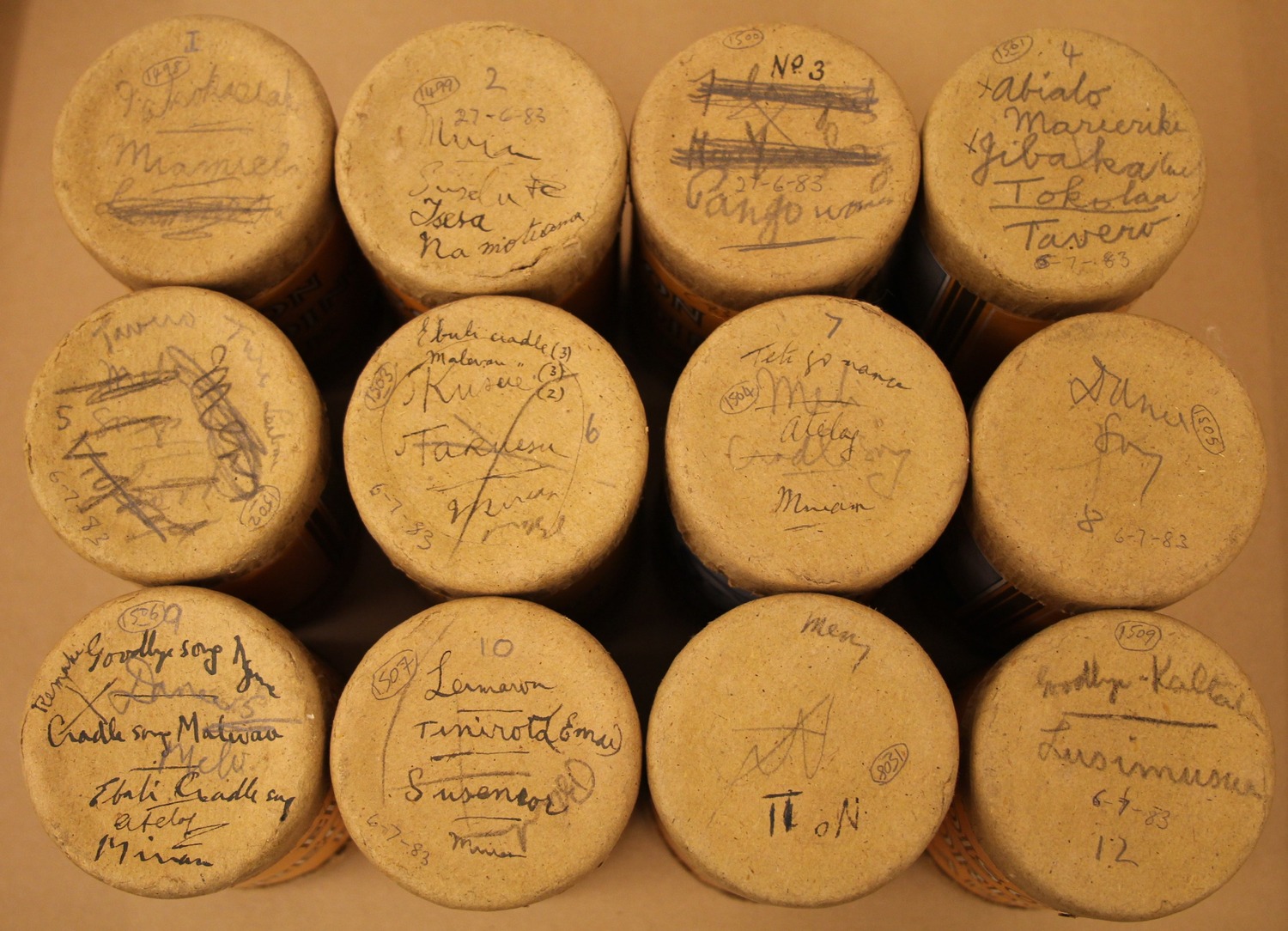 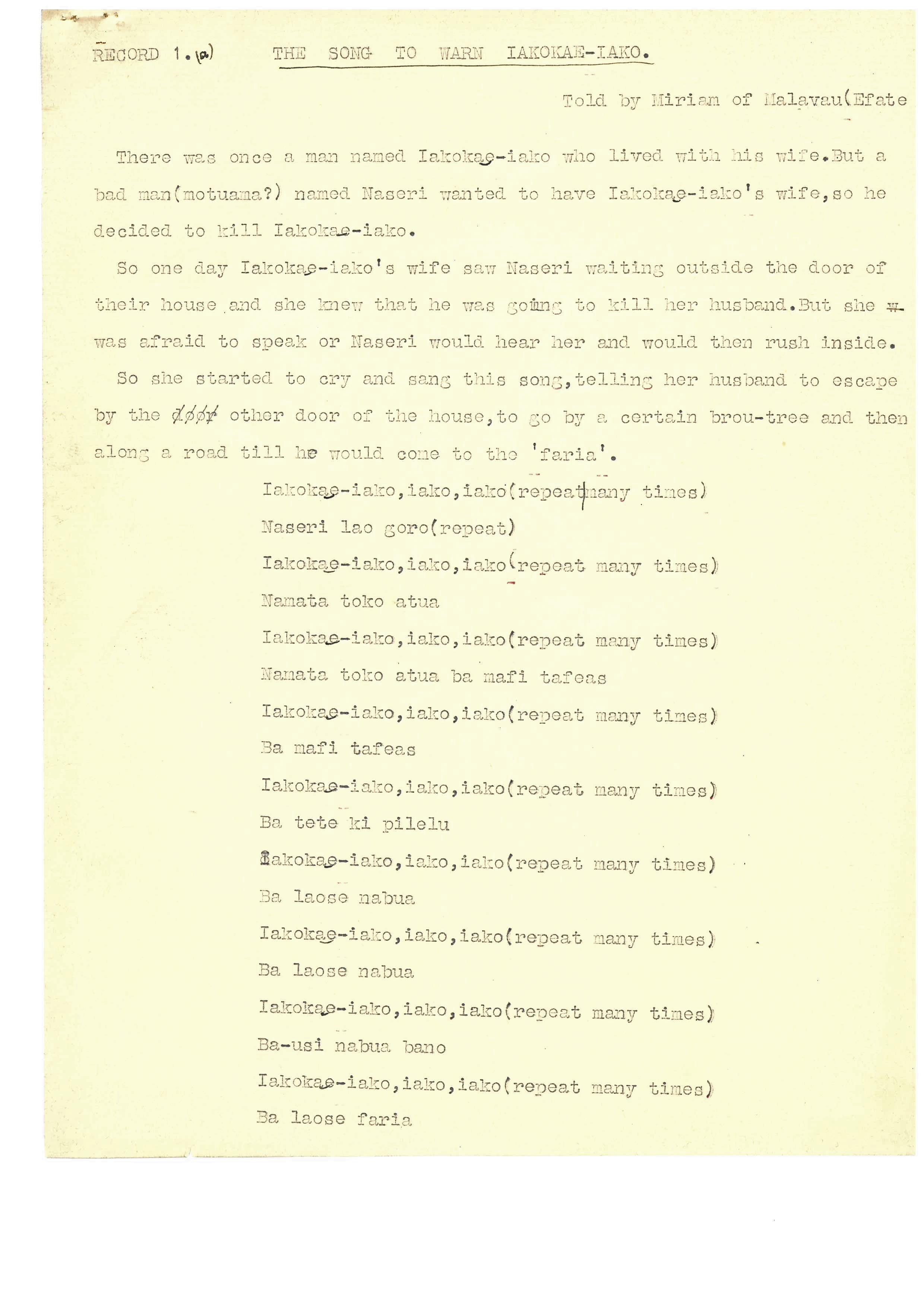 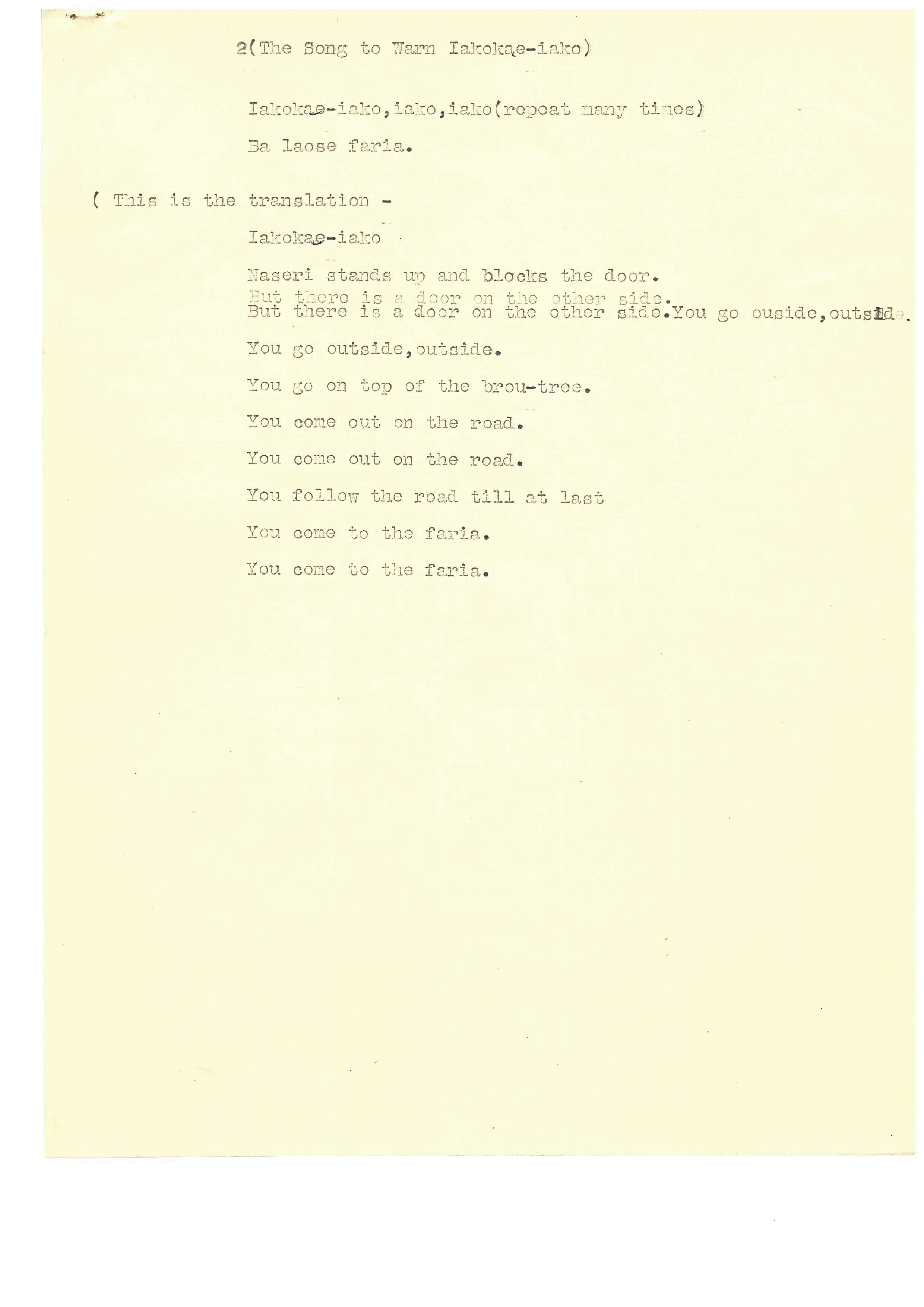  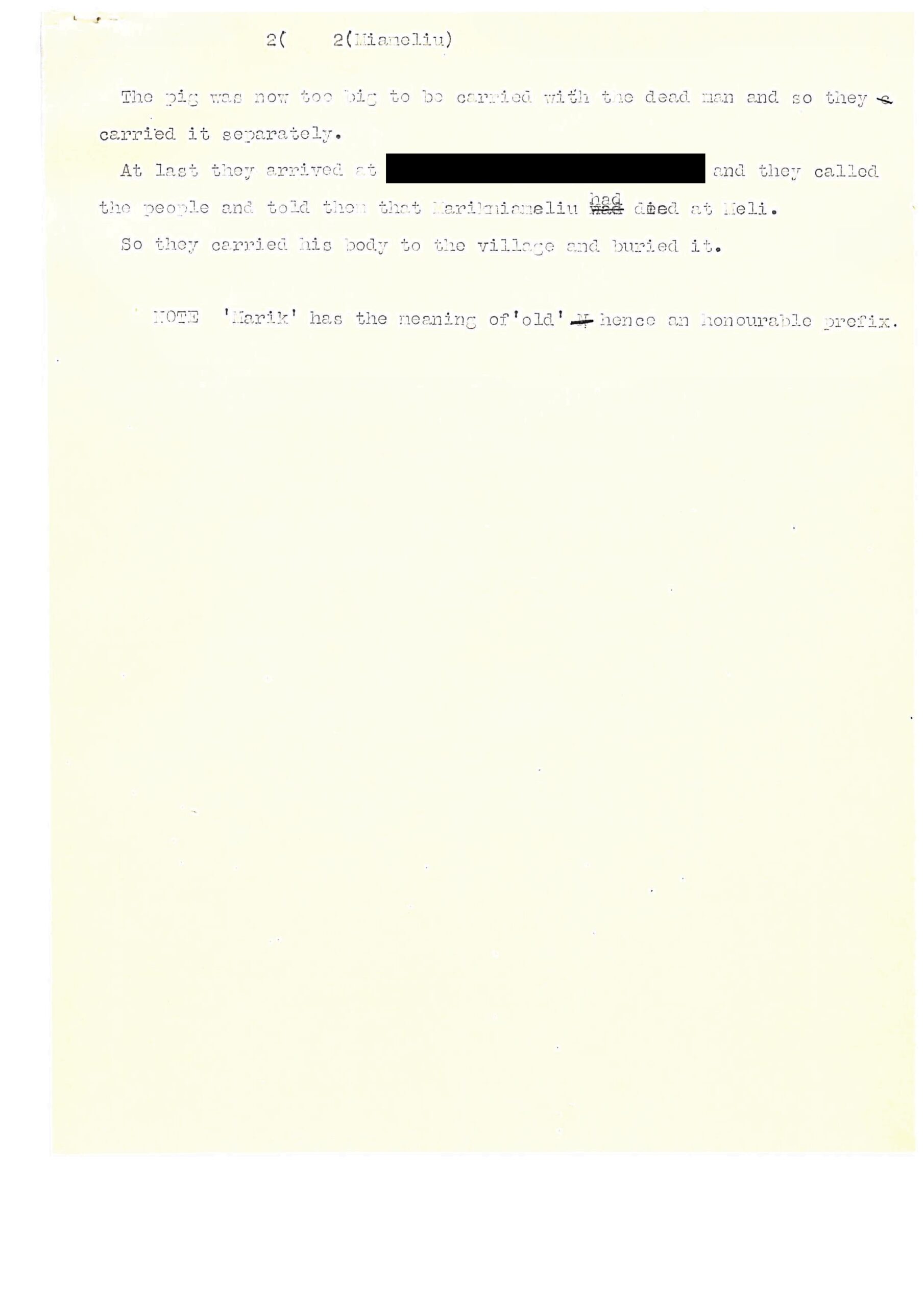 | Related notes, transcriptions and translations held by the British Library Sound Archive | |||||||
| C83/1499 | The Motuama and the Suseli / Mapuli, the pigeon / The woman of Laosa | Miriam of Malavau (singer, female) | Port Vila, Efate, New Hebrides Condominium | January 1924 – June 1924 | 1. The Motuama and the Suseli - solo female vocal, unaccompanied. 2. Mapuli, the pigeon - solo female vocal, unaccompanied. 3. The woman of Laosa - solo female vocal, unaccompanied. | From Malavau (Efate), Vanuatu | Raff, Eric Maitland Kirk (1892-1927) | 5'15" | Eric Raff, 1924 | Black wax cylinder | Eric Raff 1924 Efate, New Hebrides Cylinder Collection | British Library | 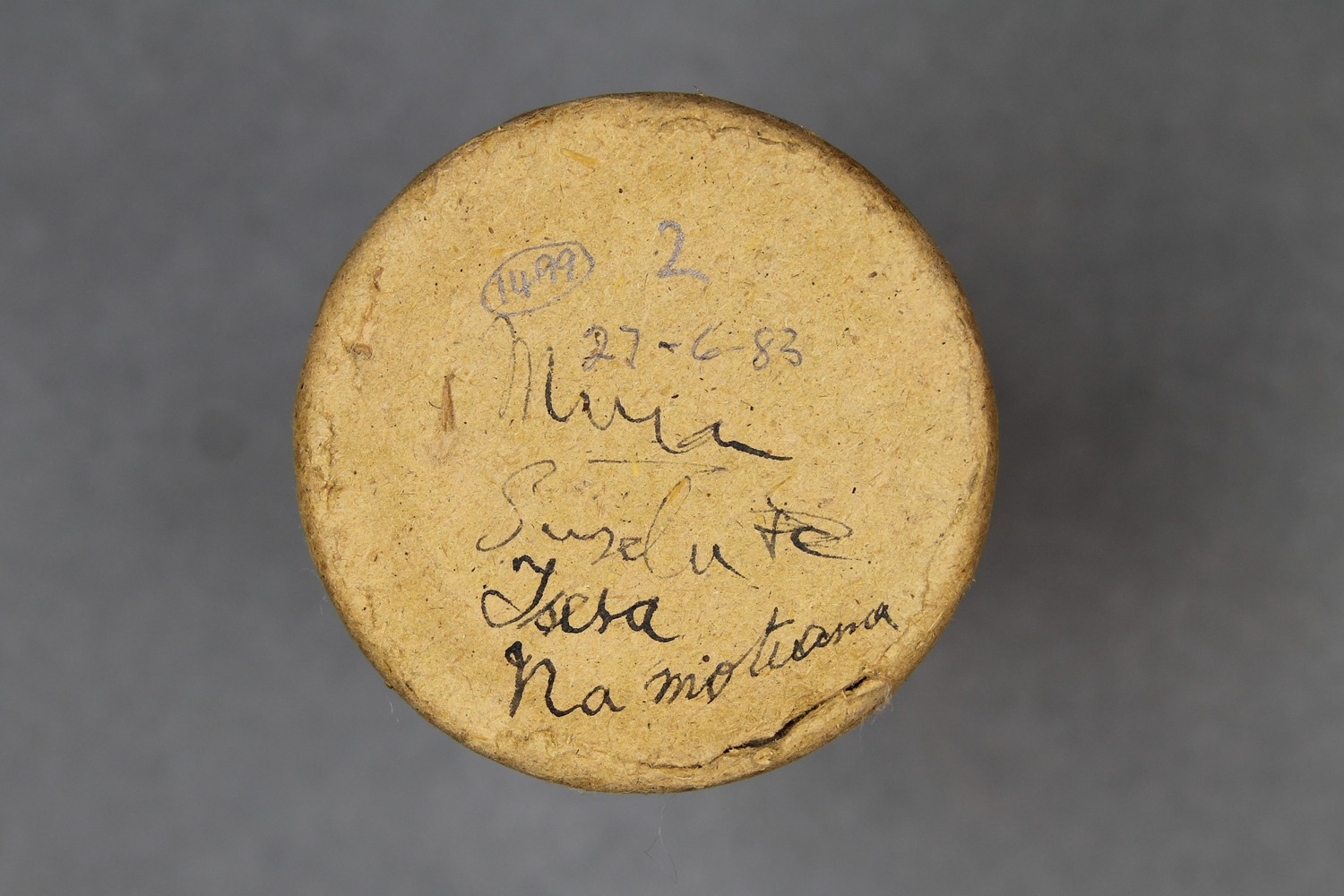 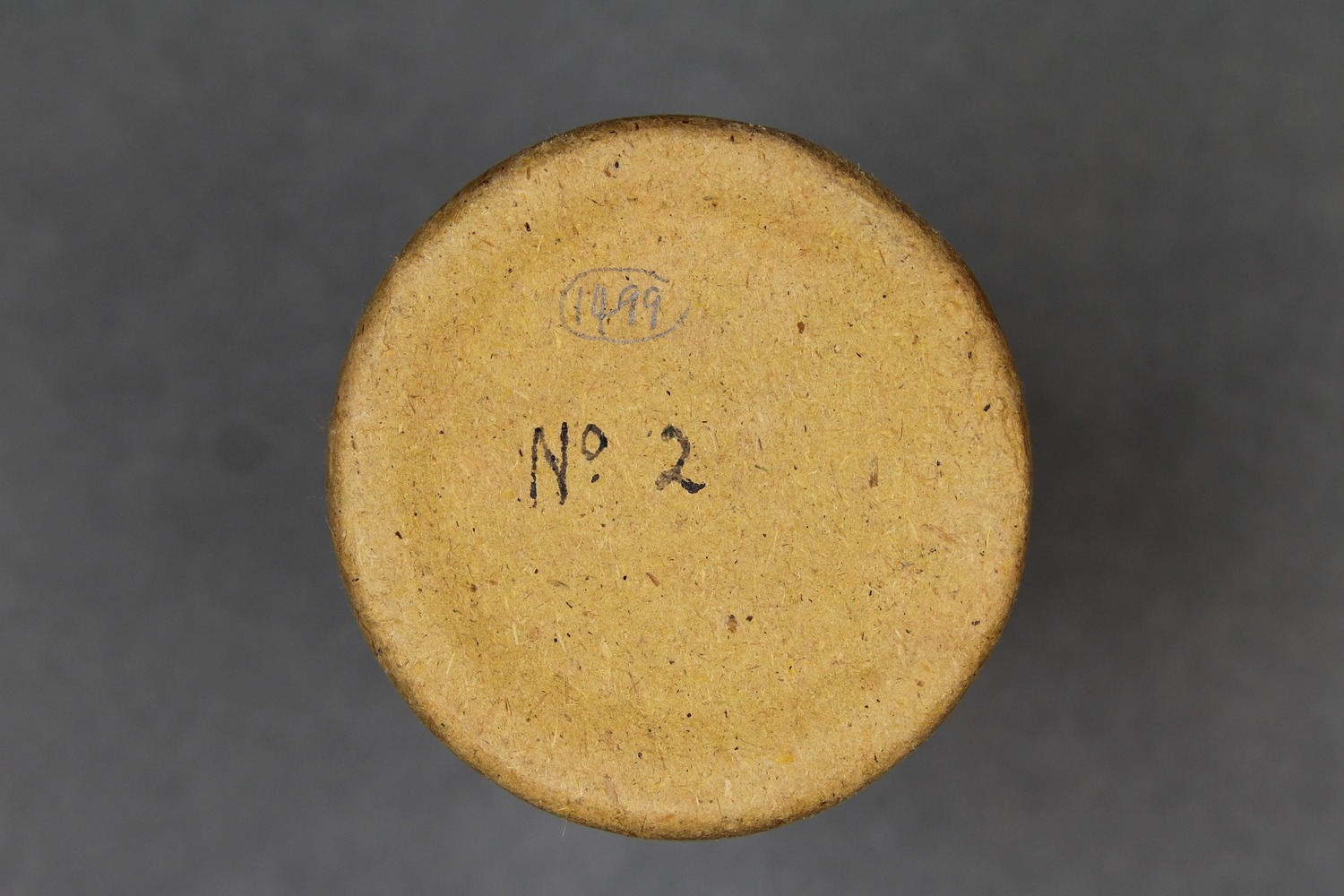   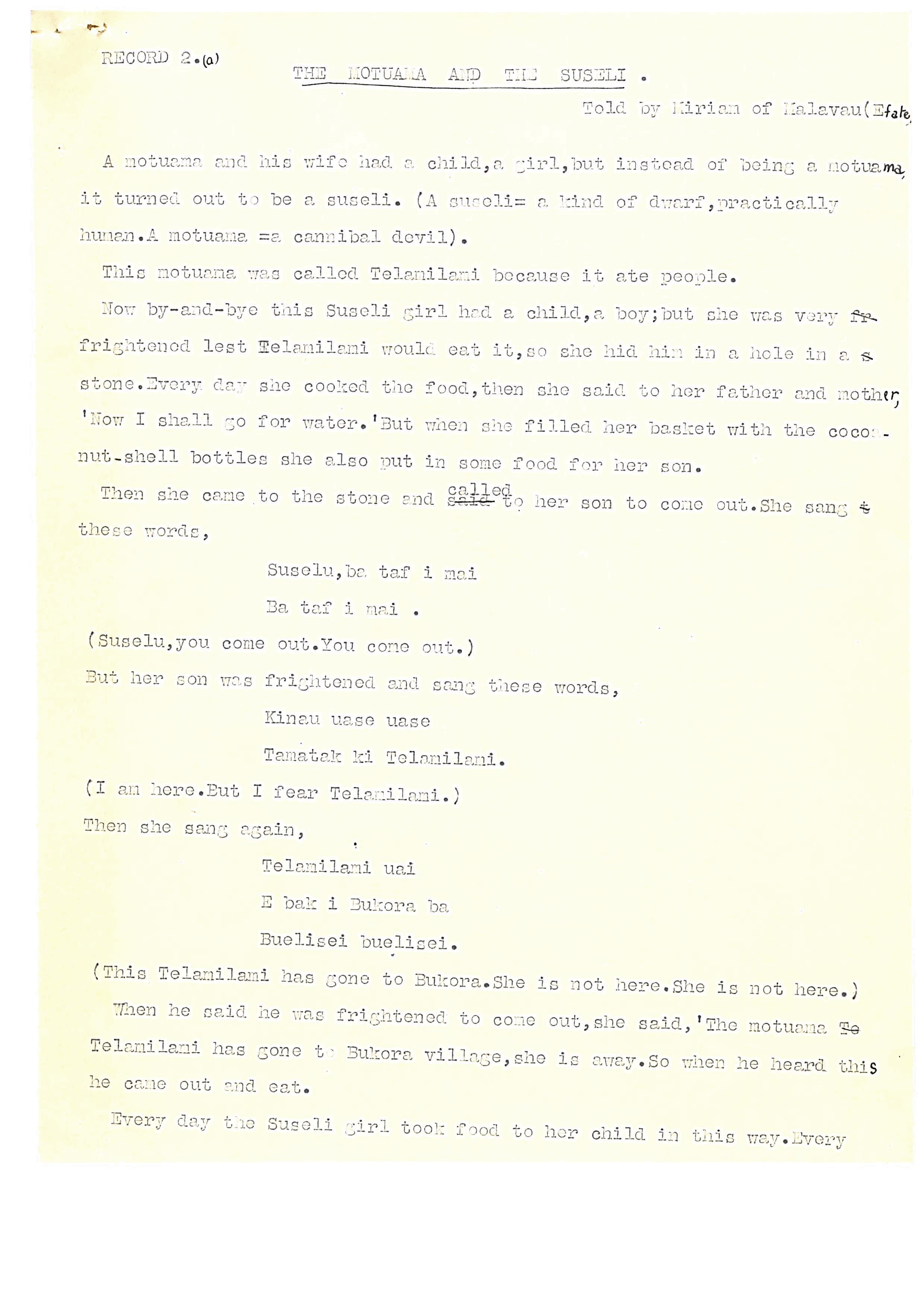 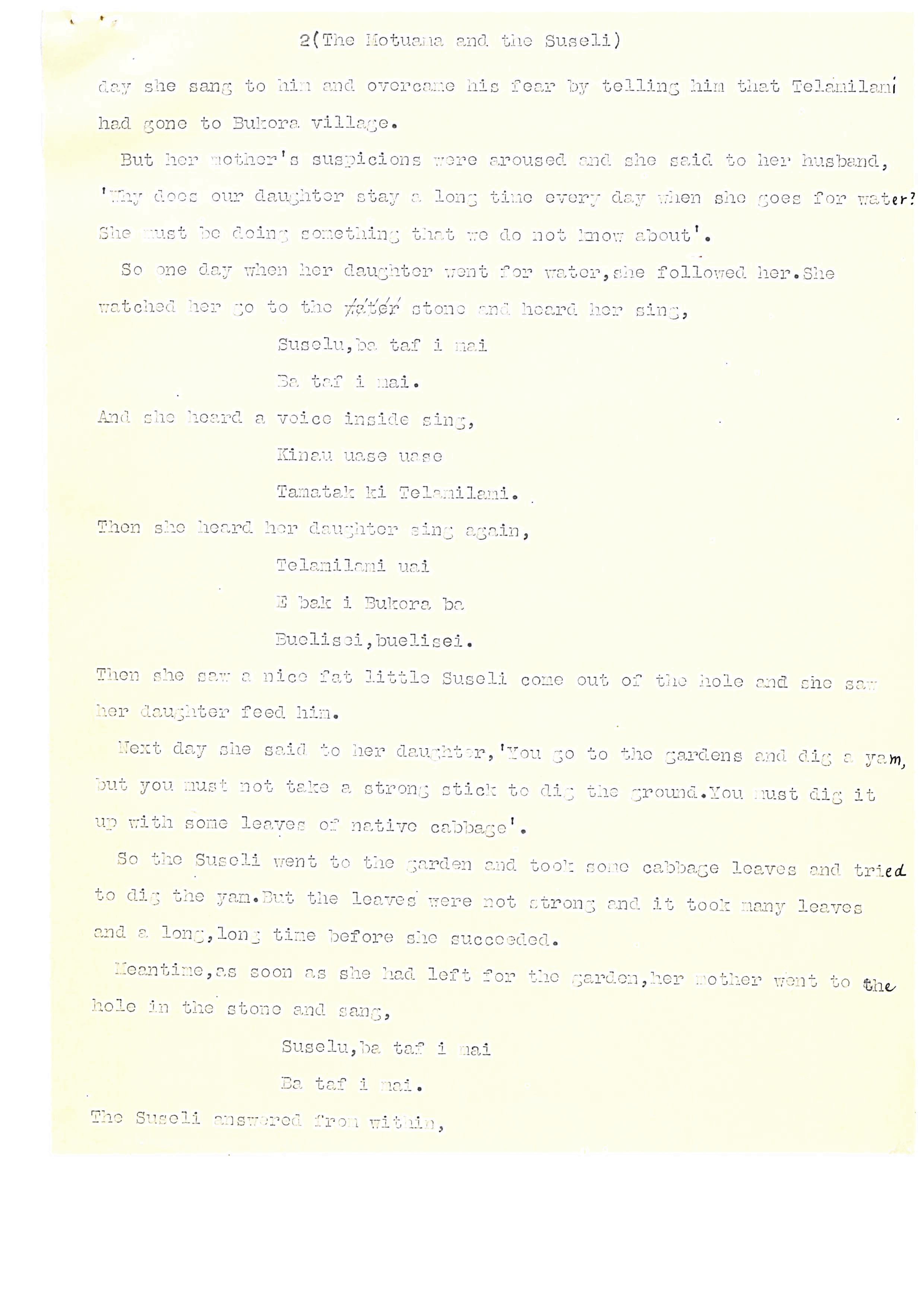 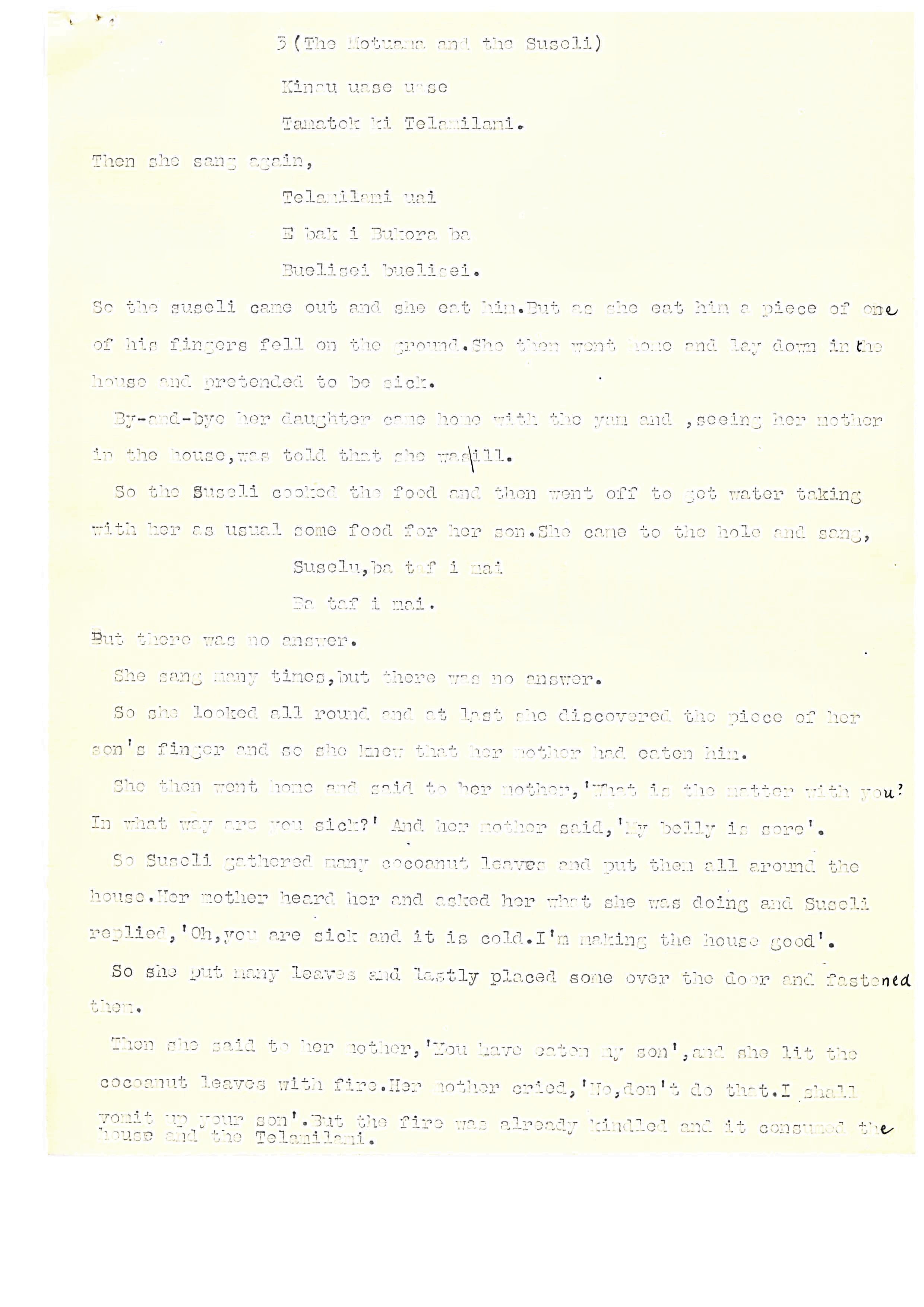 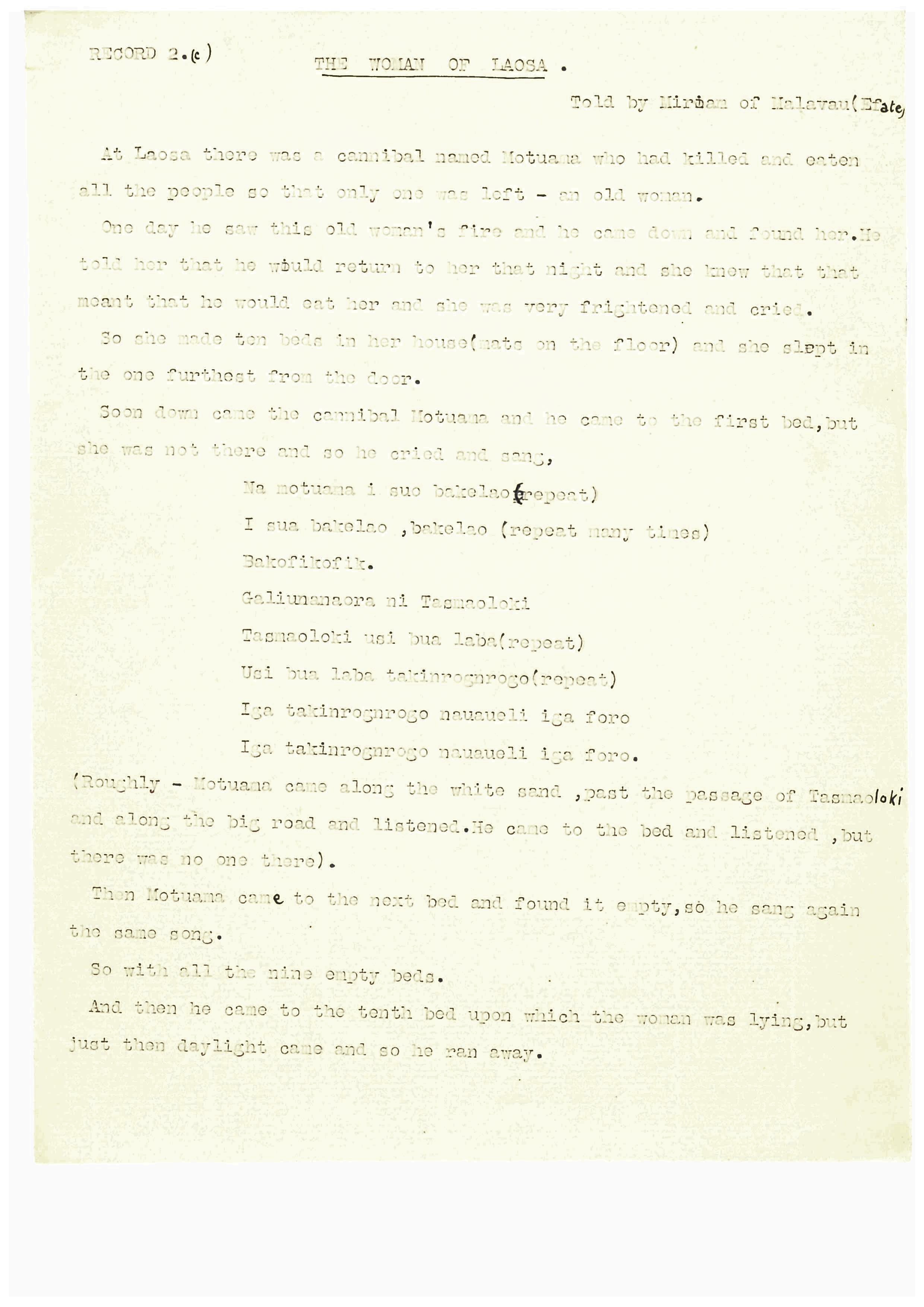   | Related notes, transcriptions and translations held by the British Library Sound Archive | ||||||||
| C83/1500 | Pango Women: [unidentified song] / Supe uao uao riki / Tariuiauia / Canoe song | Unidentified singers (female) | Port Vila, Efate, New Hebrides Condominium | January 1924 – June 1924 | 1. Unknown (female group vocal). 2. Supe uao uao riki (female group vocal). 3. Tariuiauia (female group vocal). 4. Canoe song (female group vocal). | Singers from Vanuatu; Pango, Efate | Reasonable quality recording | Raff, Eric Maitland Kirk (1892-1927) | 4'47" | Eric Raff, 1924 | Black wax cylinder | Eric Raff 1924 Efate, New Hebrides Cylinder Collection | British Library |  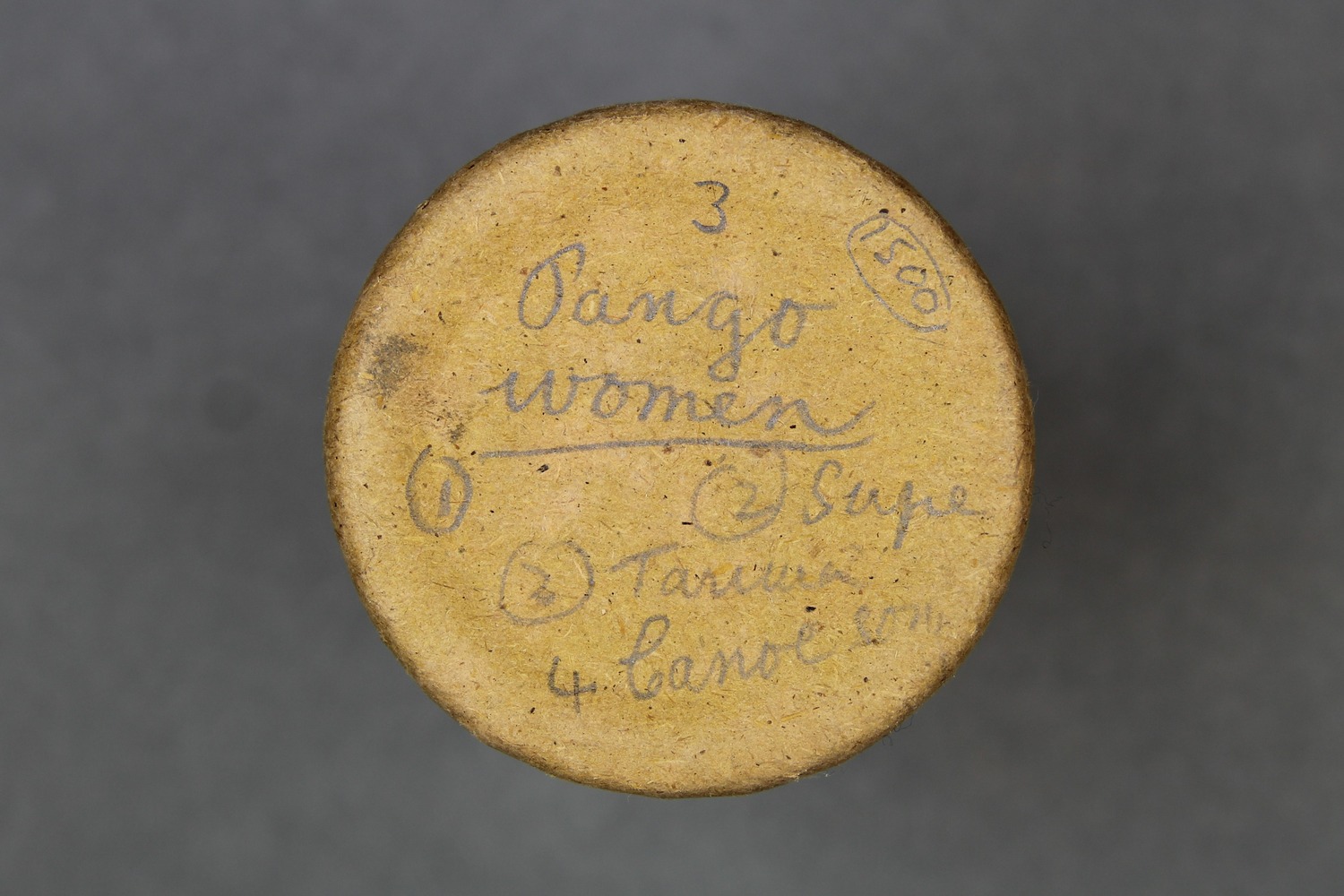    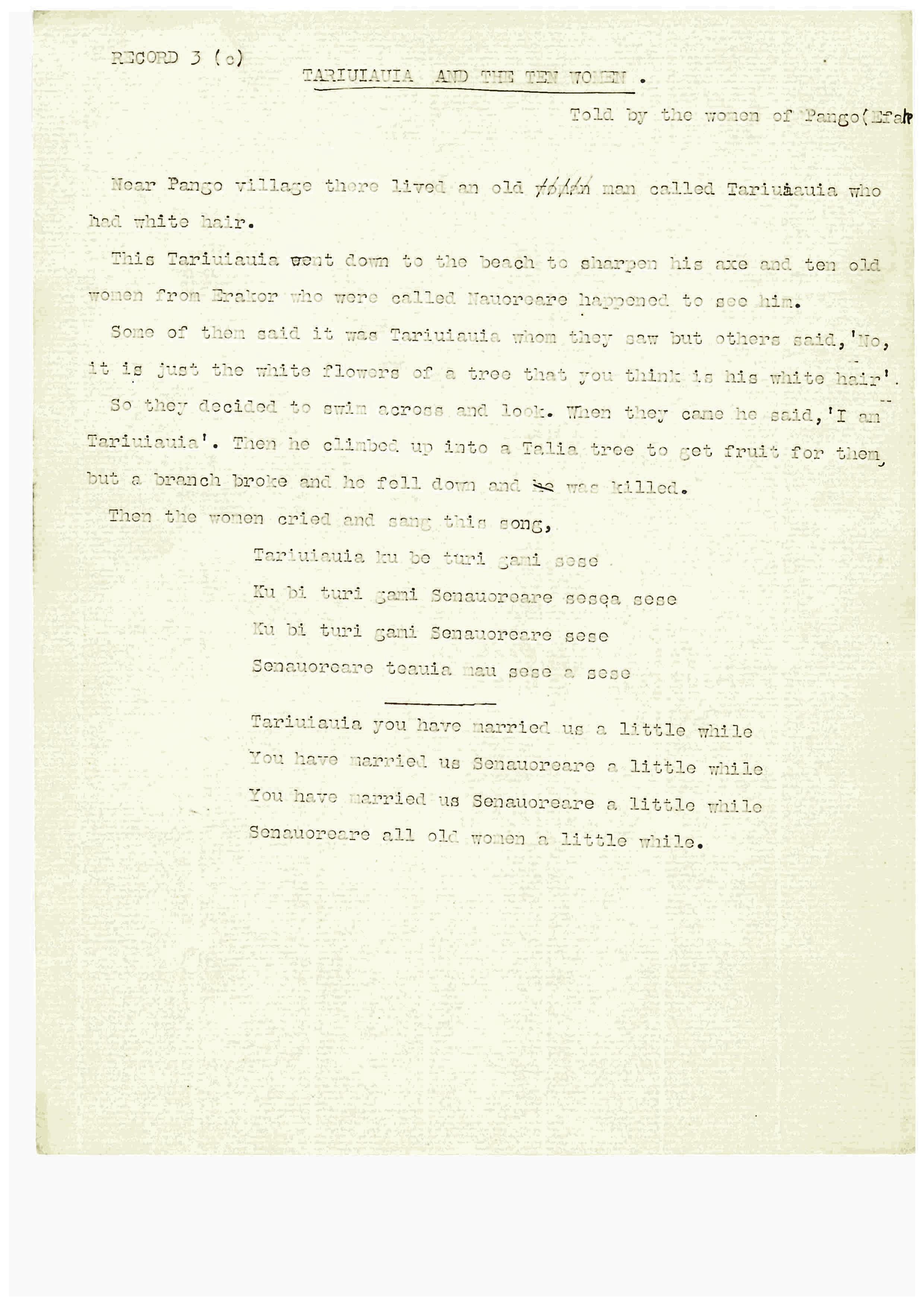 | Related notes, transcriptions and translations held by the British Library Sound Archive | |||||||
| C83/1501 | Abialo / Marieriki / Jibika Tuili / Tokolau | Tavero of Meli (singer, male) | Port Vila, Efate, New Hebrides Condominium | January 1924 – June 1924 | 1. Abialo (solo male vocal). 2. Marieriki (solo male vocal). 3. Jibika Tuili (solo male vocal). 4. Tokolau (solo male vocal). | From Meli, Vanuatu | Reasonable quality recording | Raff, Eric Maitland Kirk (1892-1927) | 5'05" | Eric Raff, 1924 | Black wax cylinder | Eric Raff 1924 Efate, New Hebrides Cylinder Collection | British Library | 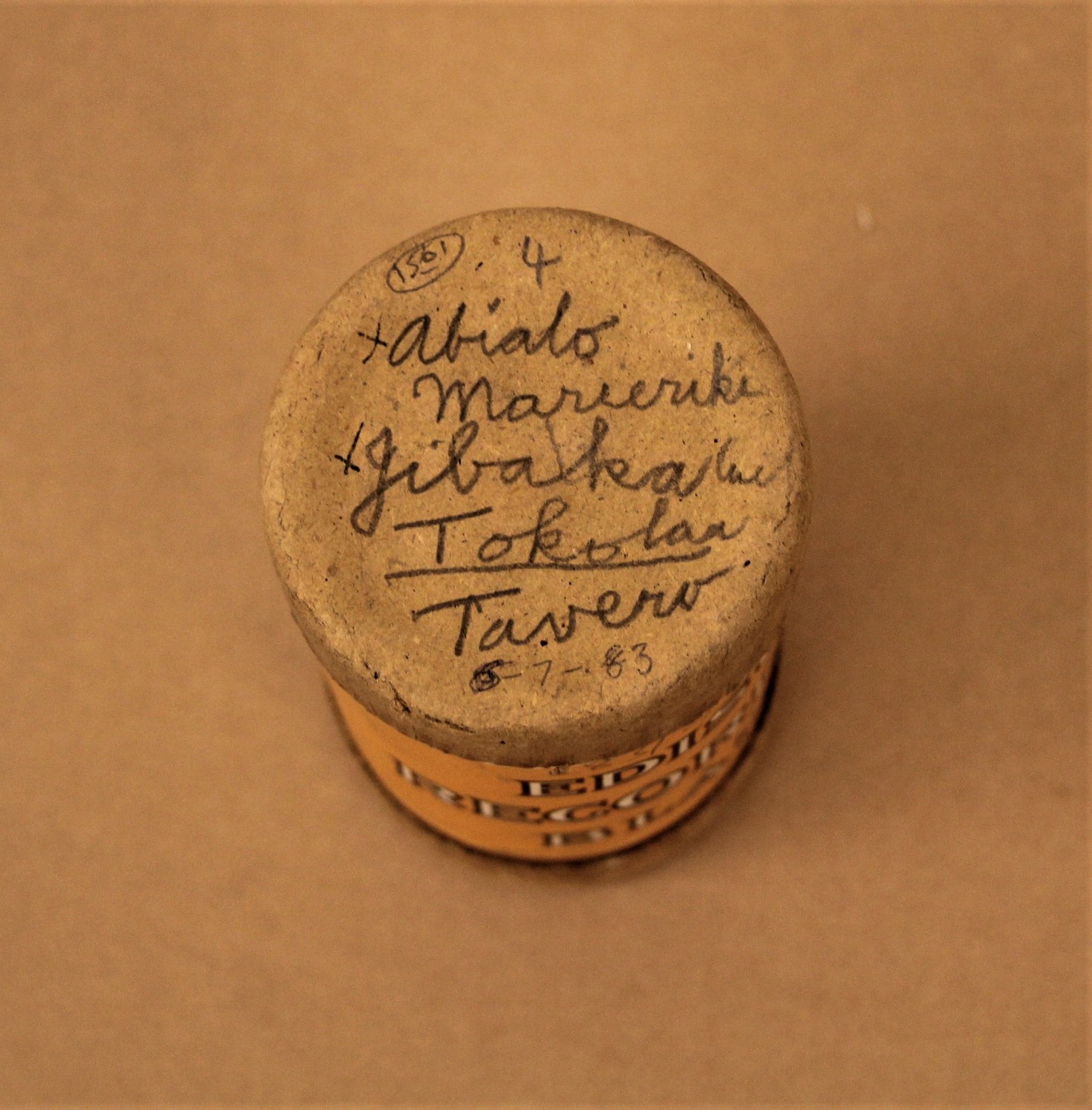   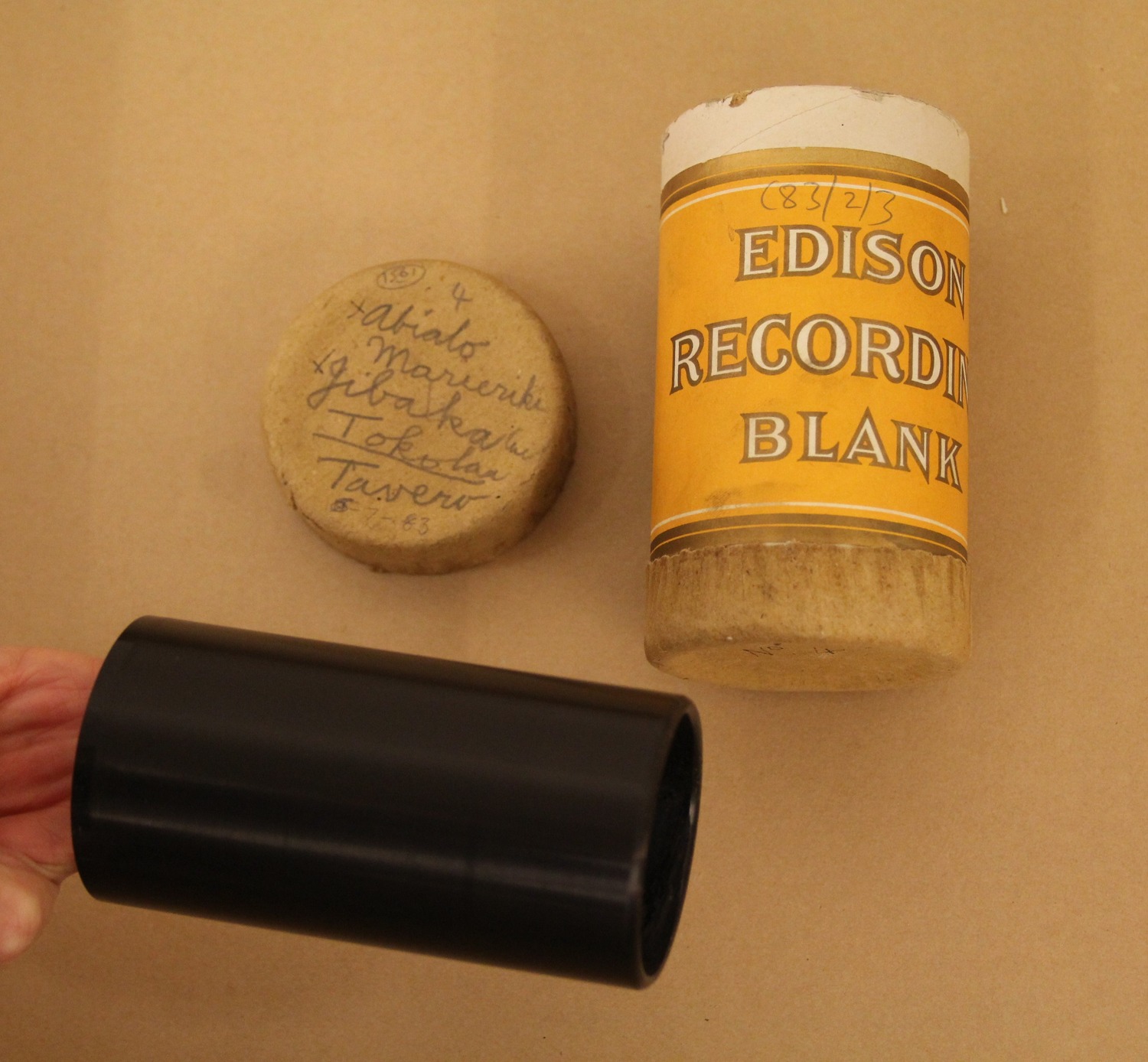   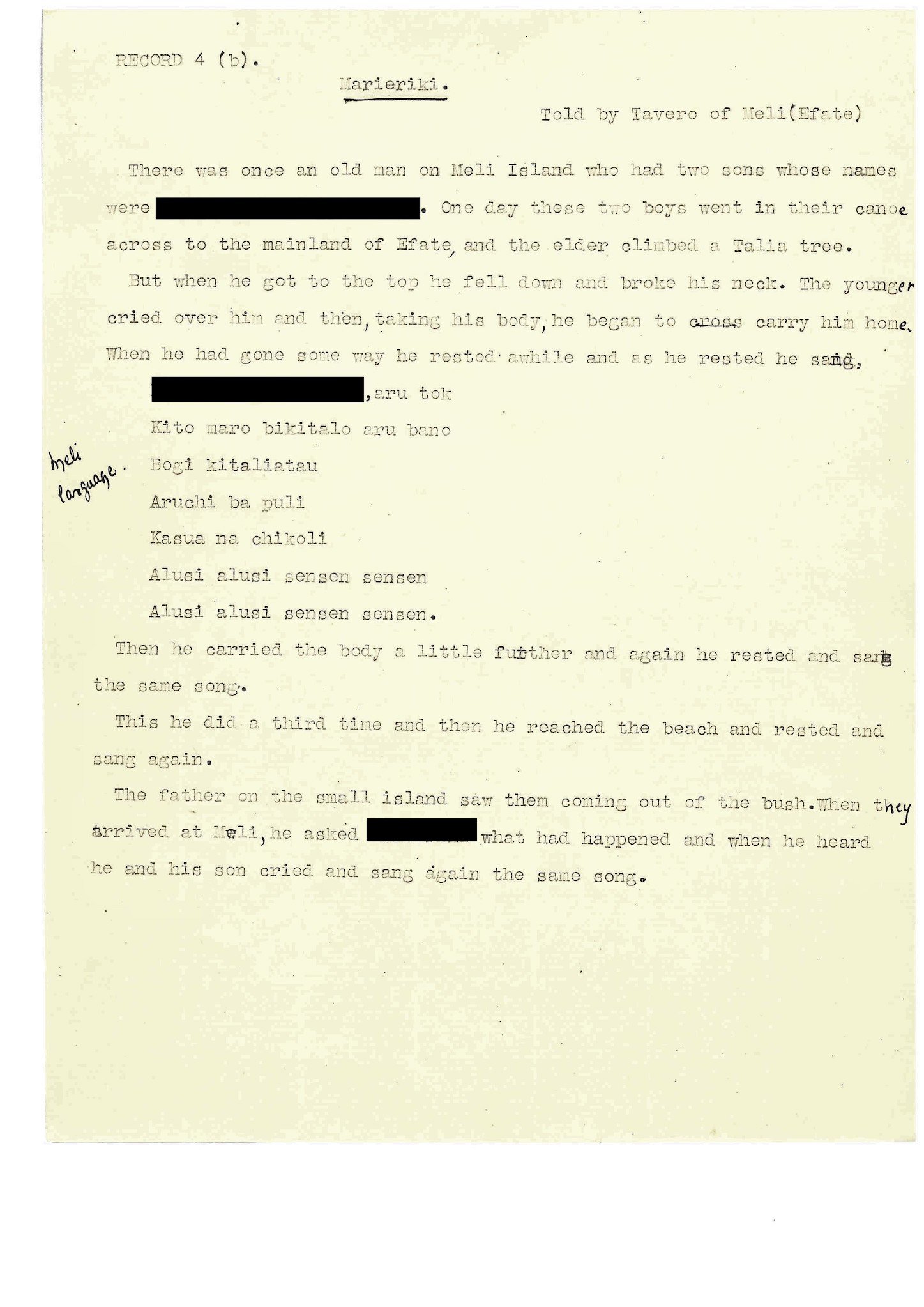 | Related notes, transcriptions and translations held by the British Library Sound Archive | |||||||
| C83/1502 | Teromairaga / New Year song / Avau Elusi | Tavero of Meli (singer, male); Leiboni of Meli (singer); Turi of Leleppa (singer) | Port Vila, Efate, New Hebrides Condominium | January 1924 – June 1924 | 1. Teromairaga (group vocal). 2. New Year song (group vocal). 3. Avau Elusi (group vocal). | Singers from Meli, Vanuatu and Leleppa, Vanuatu | Reasonable quality recording | Raff, Eric Maitland Kirk (1892-1927) | 5'15" | Eric Raff, 1924 | Black wax cylinder | Eric Raff 1924 Efate, New Hebrides Cylinder Collection | British Library | 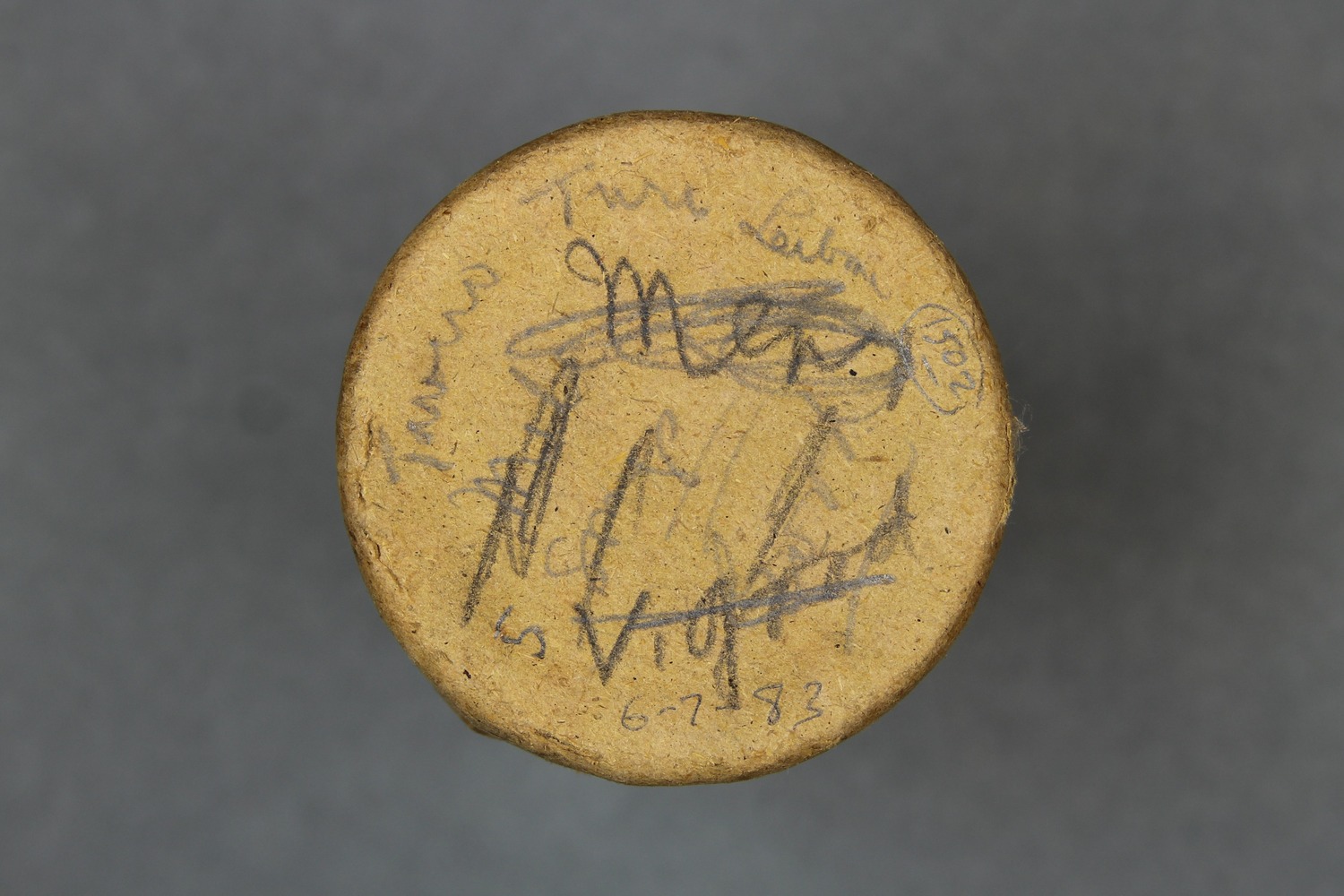 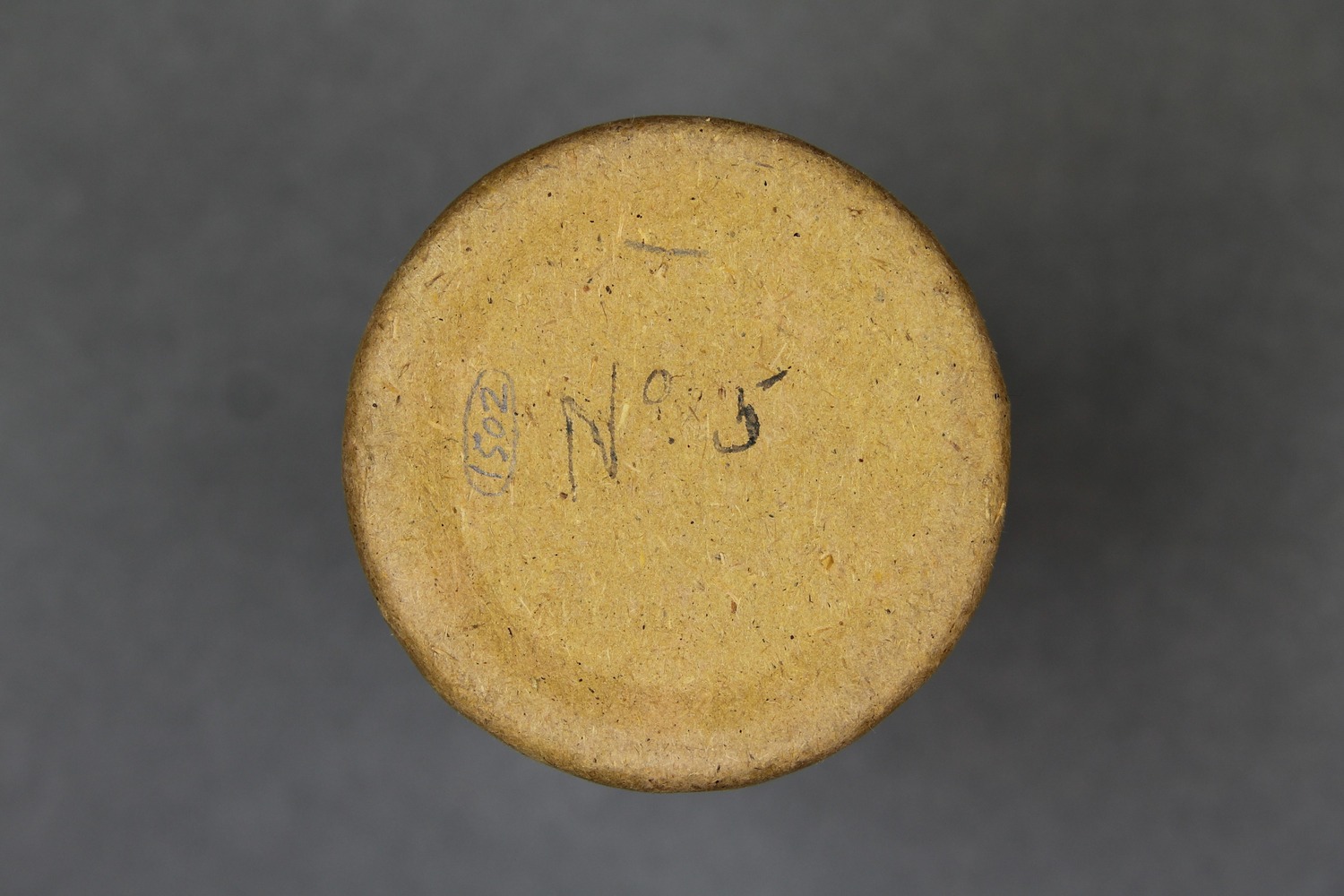   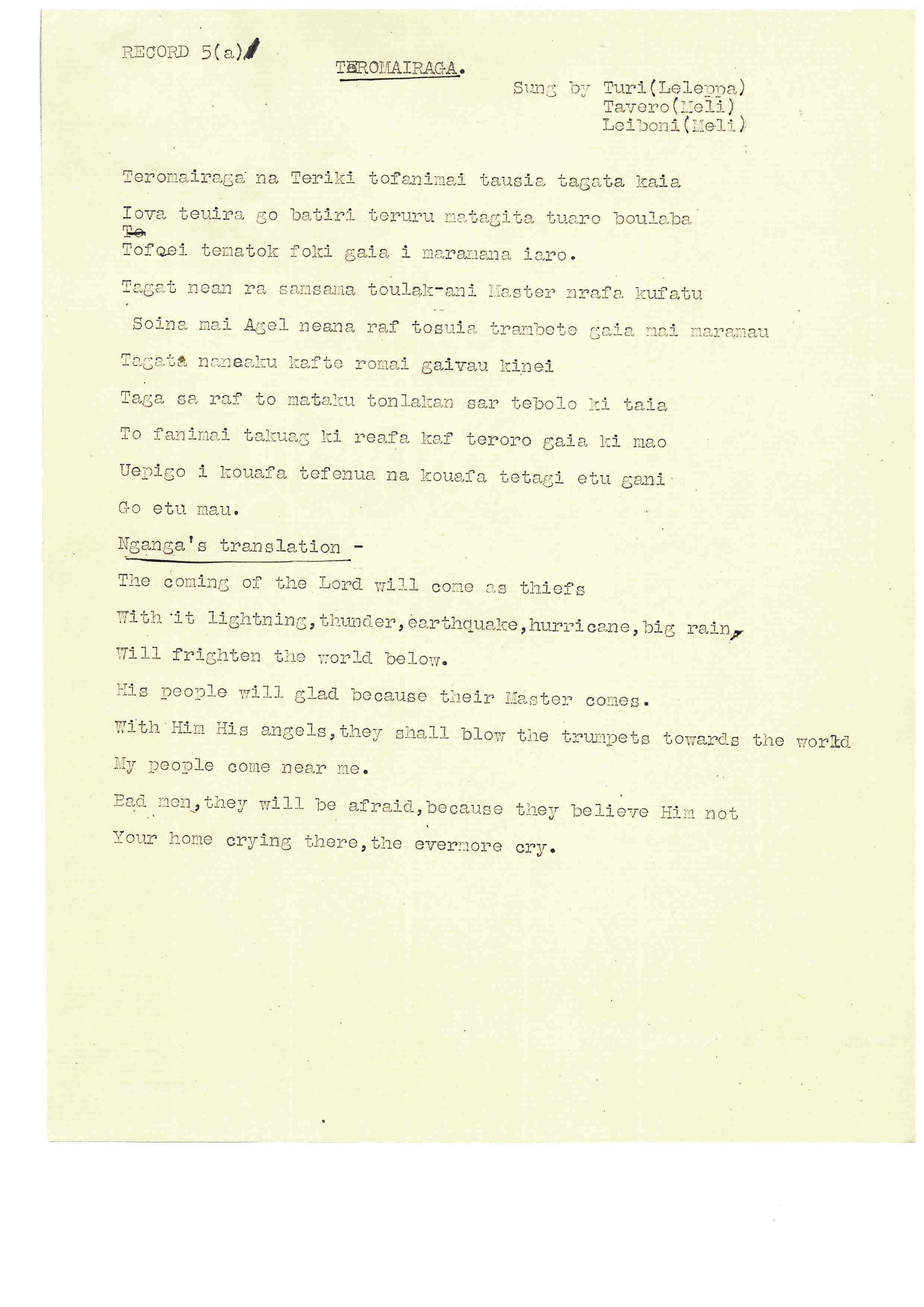  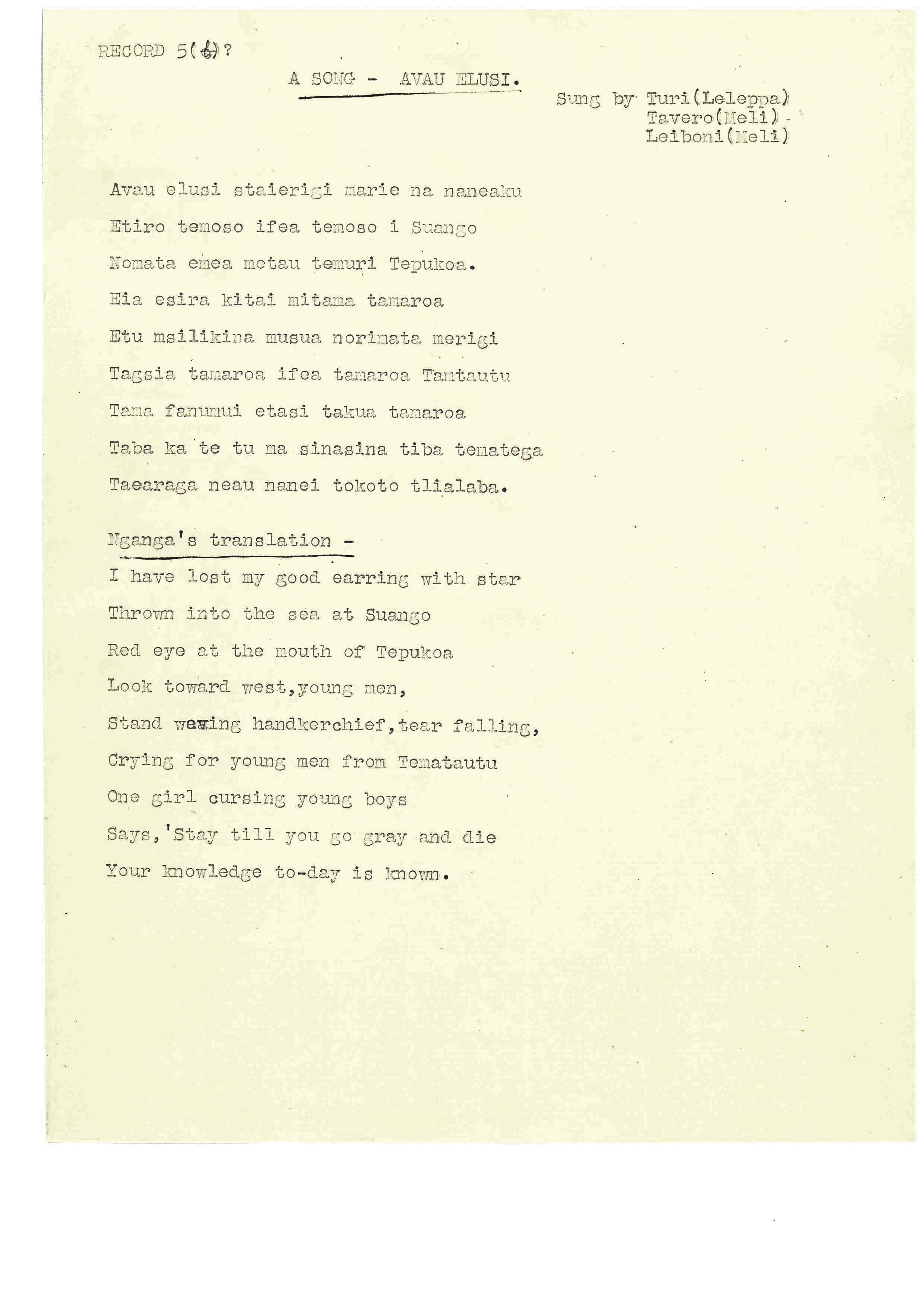 | Related notes, transcriptions and translations held by the British Library Sound Archive | |||||||
| C83/1503 | Cradle Songs | Miriam of Malavau (singer, female) | Port Vila, Efate, New Hebrides Condominium | January 1924 – June 1924 | 1. Solo female vocal. Four cradle songs sung by Miriam of Maravau (Efate Island). Lid info: ‘Ebuki cradle (3) / Malavau (3) / Kusue (2) / Takuesa.’ | From Malavau (Efate), Vanuatu | Reasonable quality recording | Raff, Eric Maitland Kirk (1892-1927) | 5'52" | Eric Raff, 1924 | Black wax cylinder | Eric Raff 1924 Efate, New Hebrides Cylinder Collection | British Library |  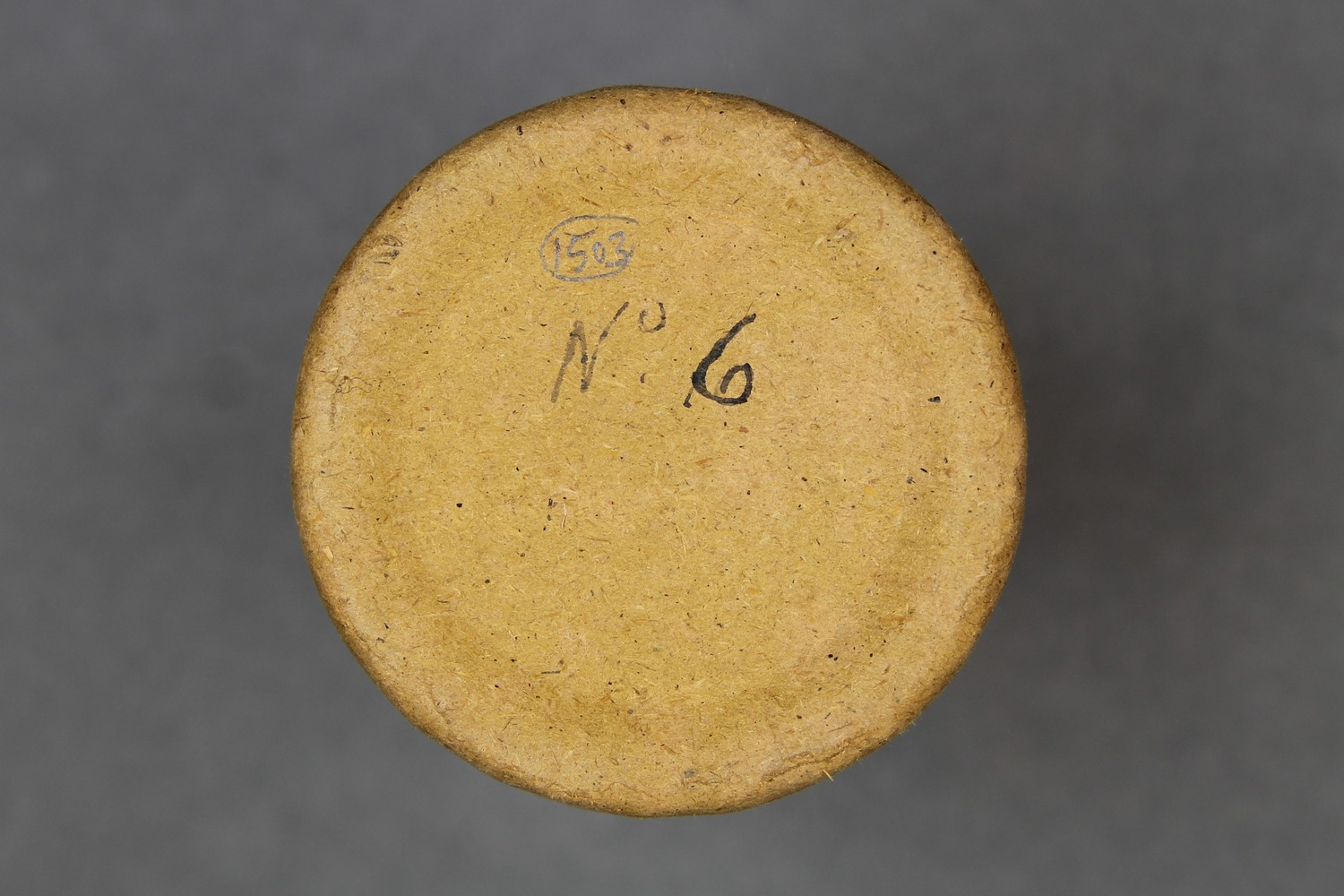   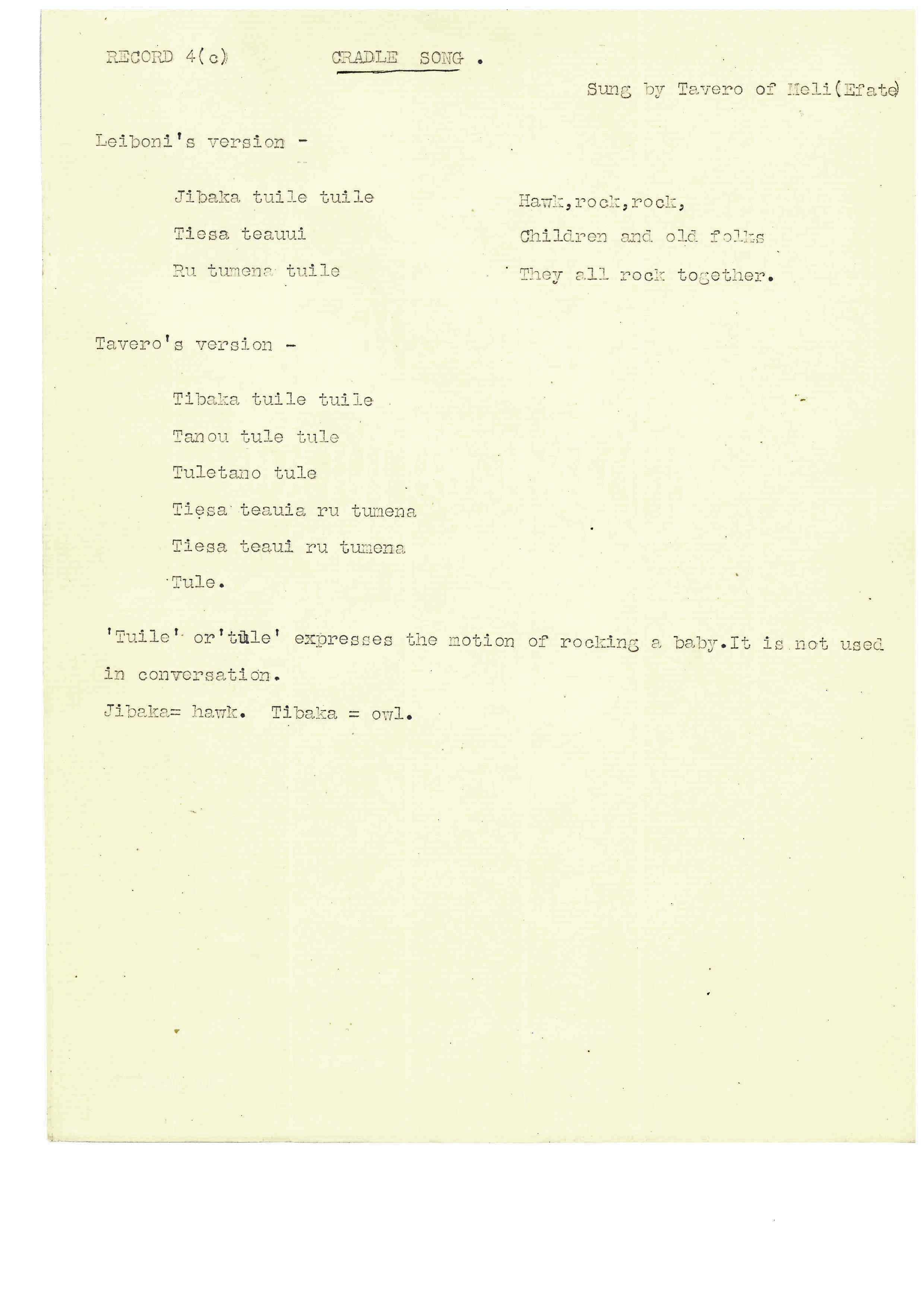  | Related notes, transcriptions and translations held by the British Library Sound Archive | |||||||
| C83/1505 | Dance Songs | Unidentified (male chorus); unidentified (percussion) | Port Vila, Efate, New Hebrides Condominium | January 1924 – June 1924 | 1. Male vocal group accompanied by percussion. | Singers from Vanuatu; Efate | Good quality recording | Raff, Eric Maitland Kirk (1892-1927) | 3'58" | Eric Raff, 1924 | Black wax cylinder | Eric Raff 1924 Efate, New Hebrides Cylinder Collection | British Library | 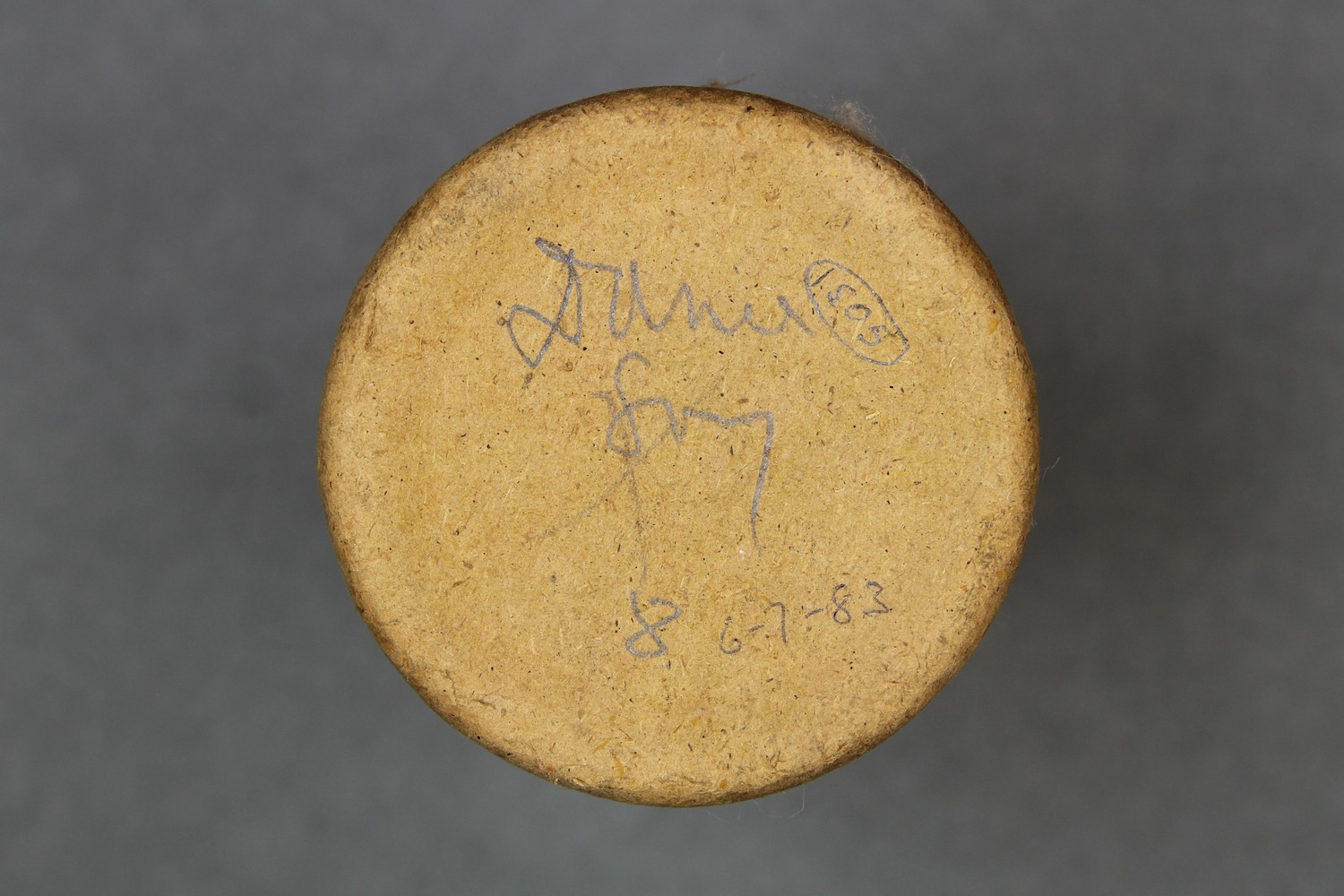  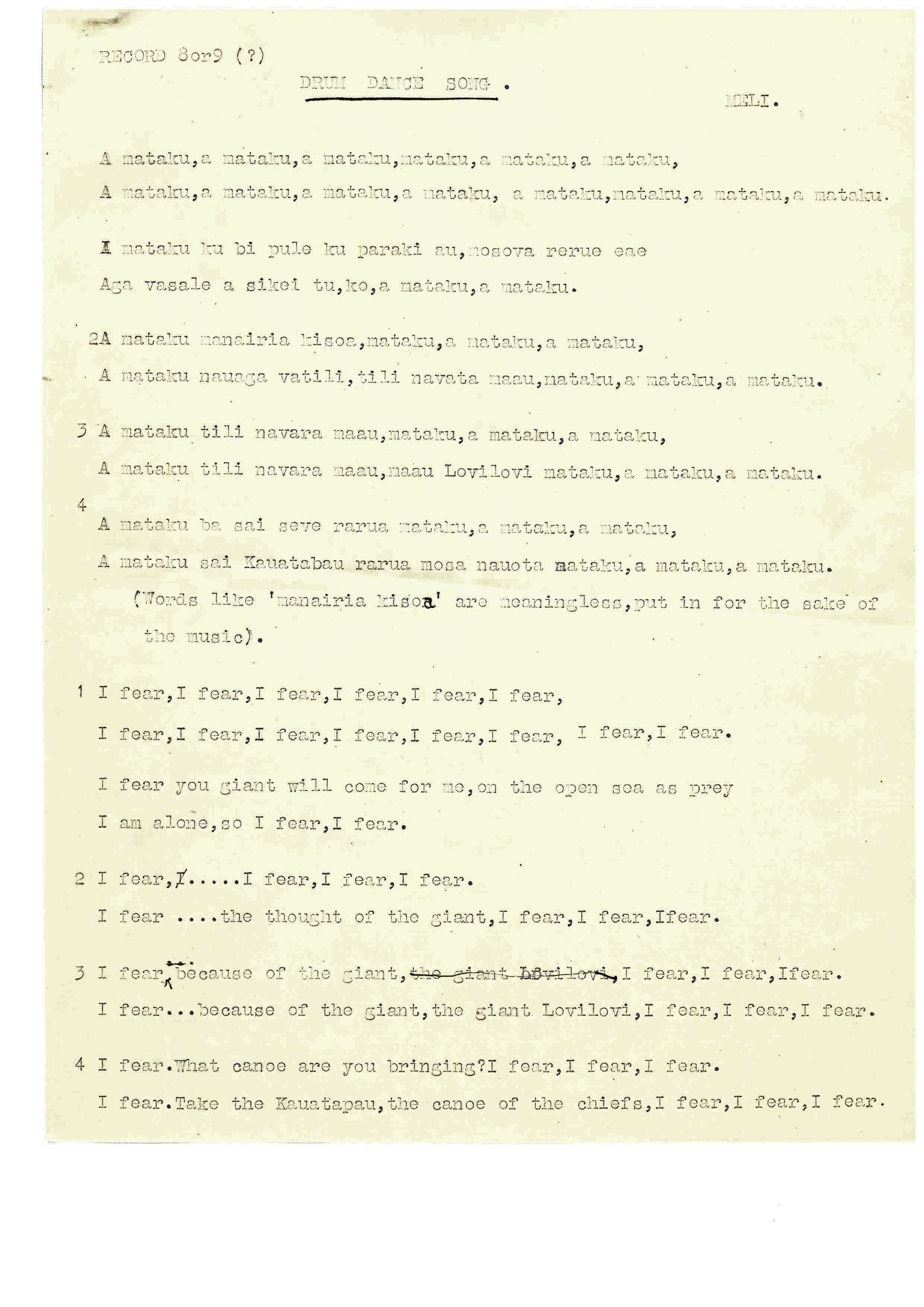 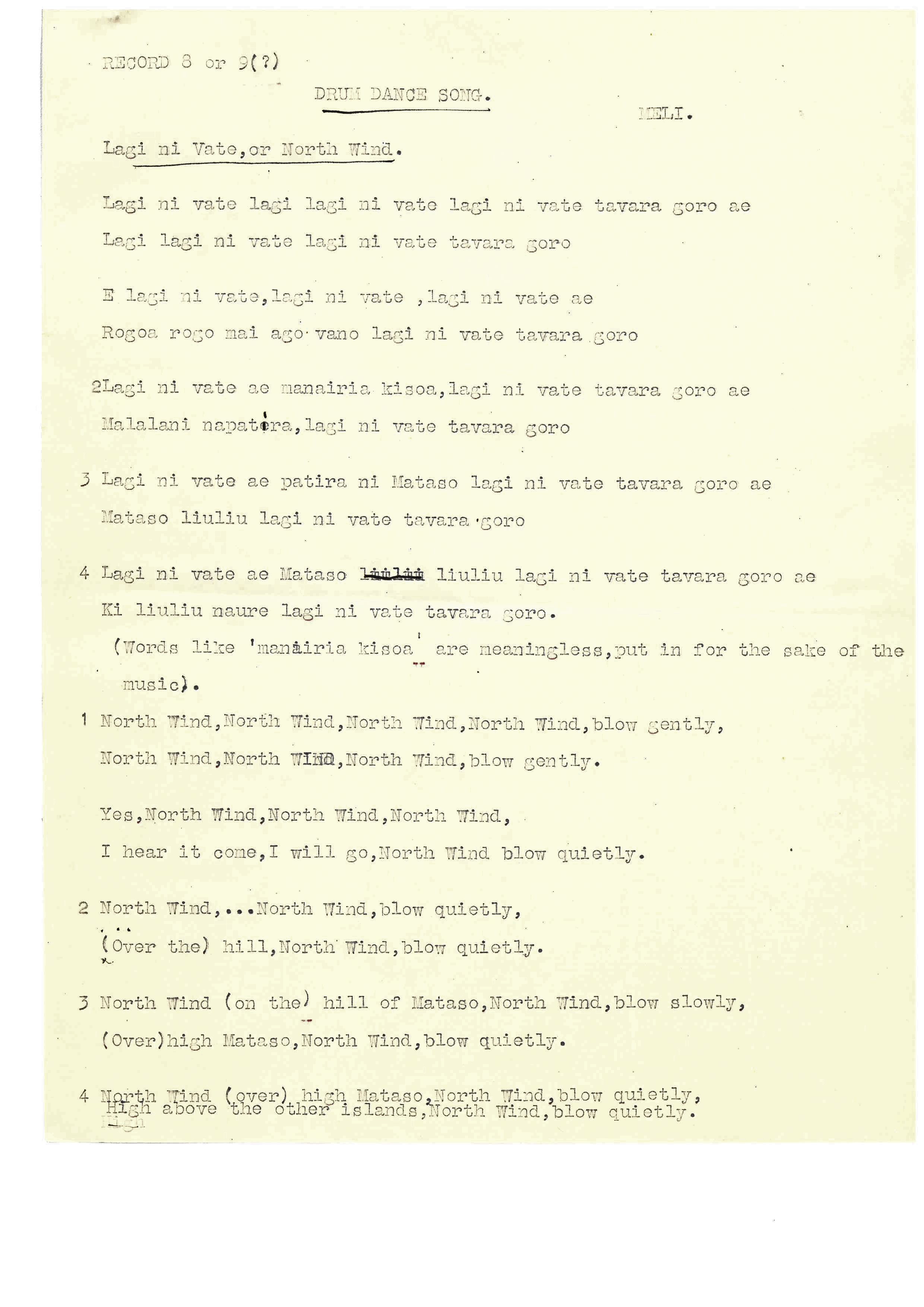   | Related notes, transcriptions and translations held by the British Library Sound Archive | |||||||
| C83/1507 | Leimaron / Tinirota (Emai) / Sesenror | Miriam of Malavau (singer, female) | Port Vila, Efate, New Hebrides Condominium | January 1924 – June 1924 | 1. Leimaron (solo female vocal). 2. Tinirota (Emai) (solo female vocal). 3. Sesenror (solo female vocal). | From Malavau (Efate), Vanuatu | Reasonable quality recording | Raff, Eric Maitland Kirk (1892-1927) | 5'03" | Eric Raff, 1924 | Black wax cylinder | Eric Raff 1924 Efate, New Hebrides Cylinder Collection | British Library | 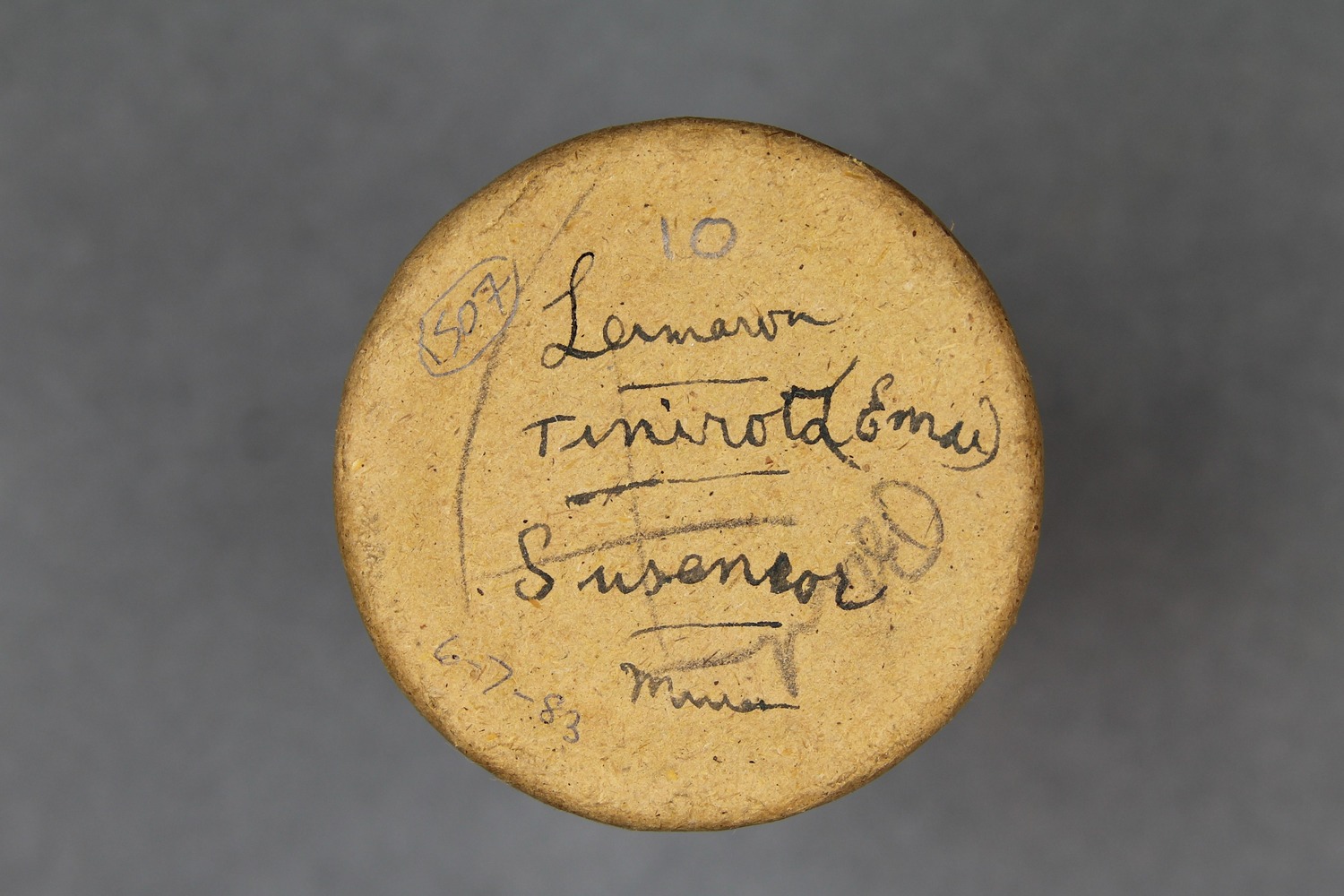 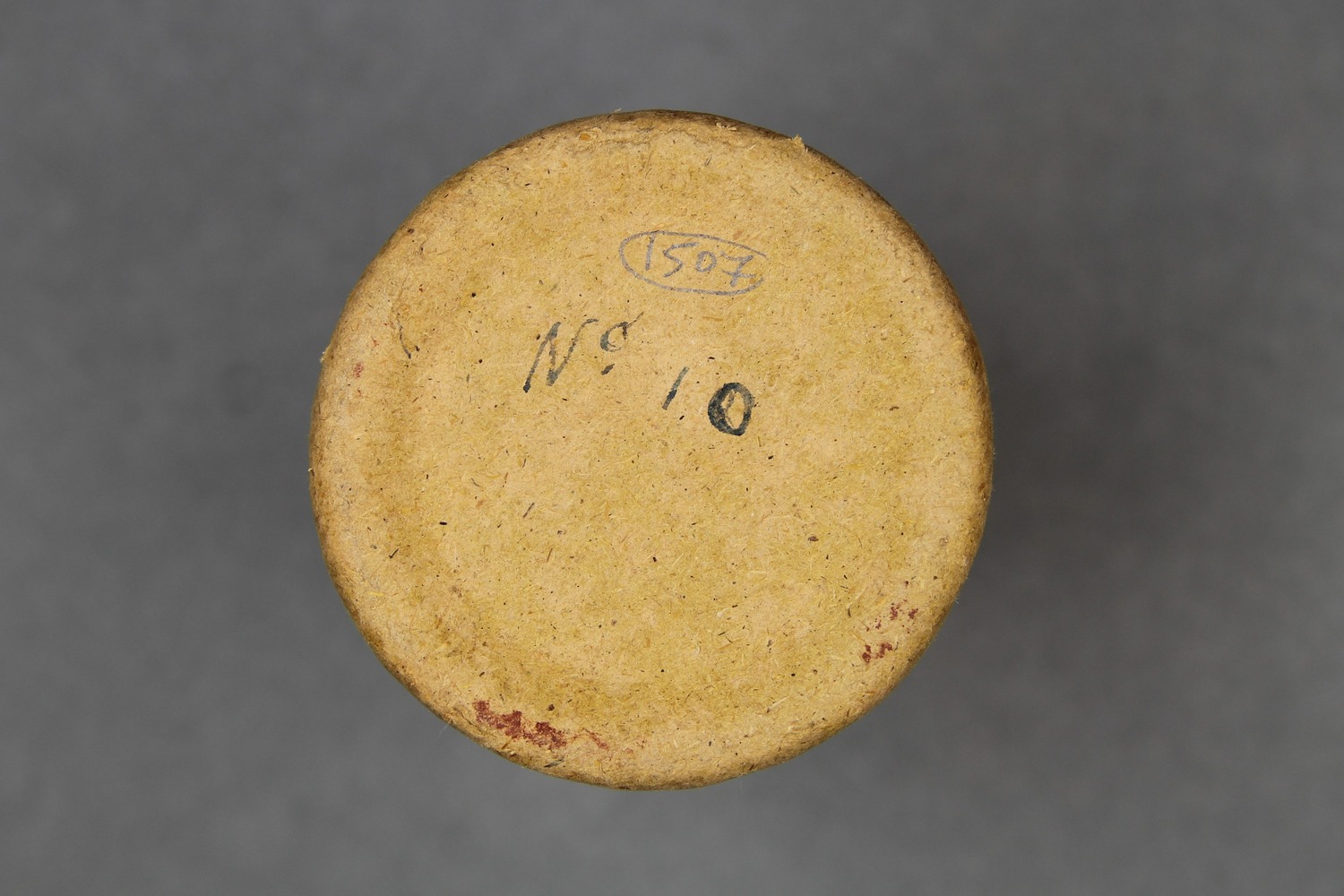 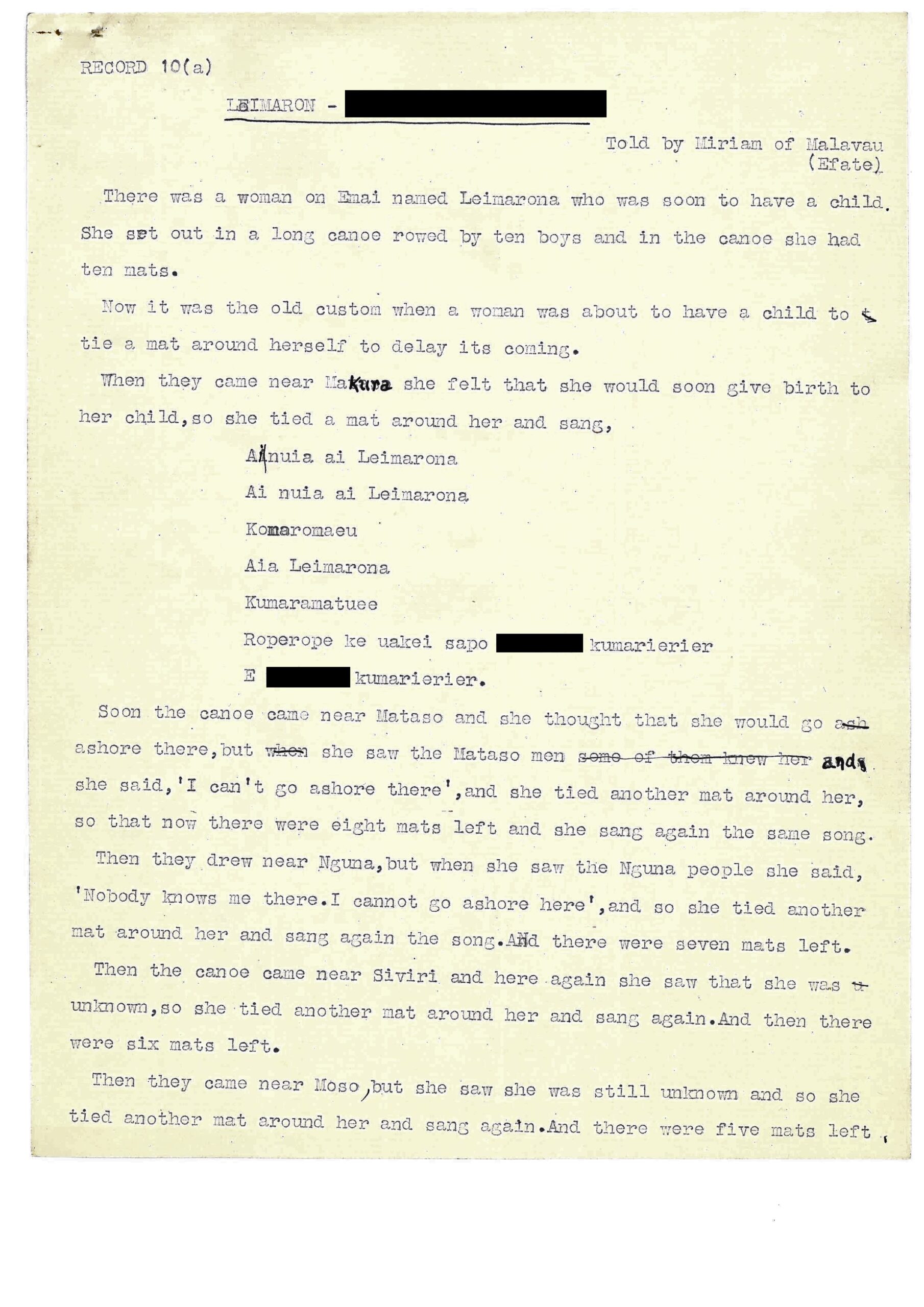 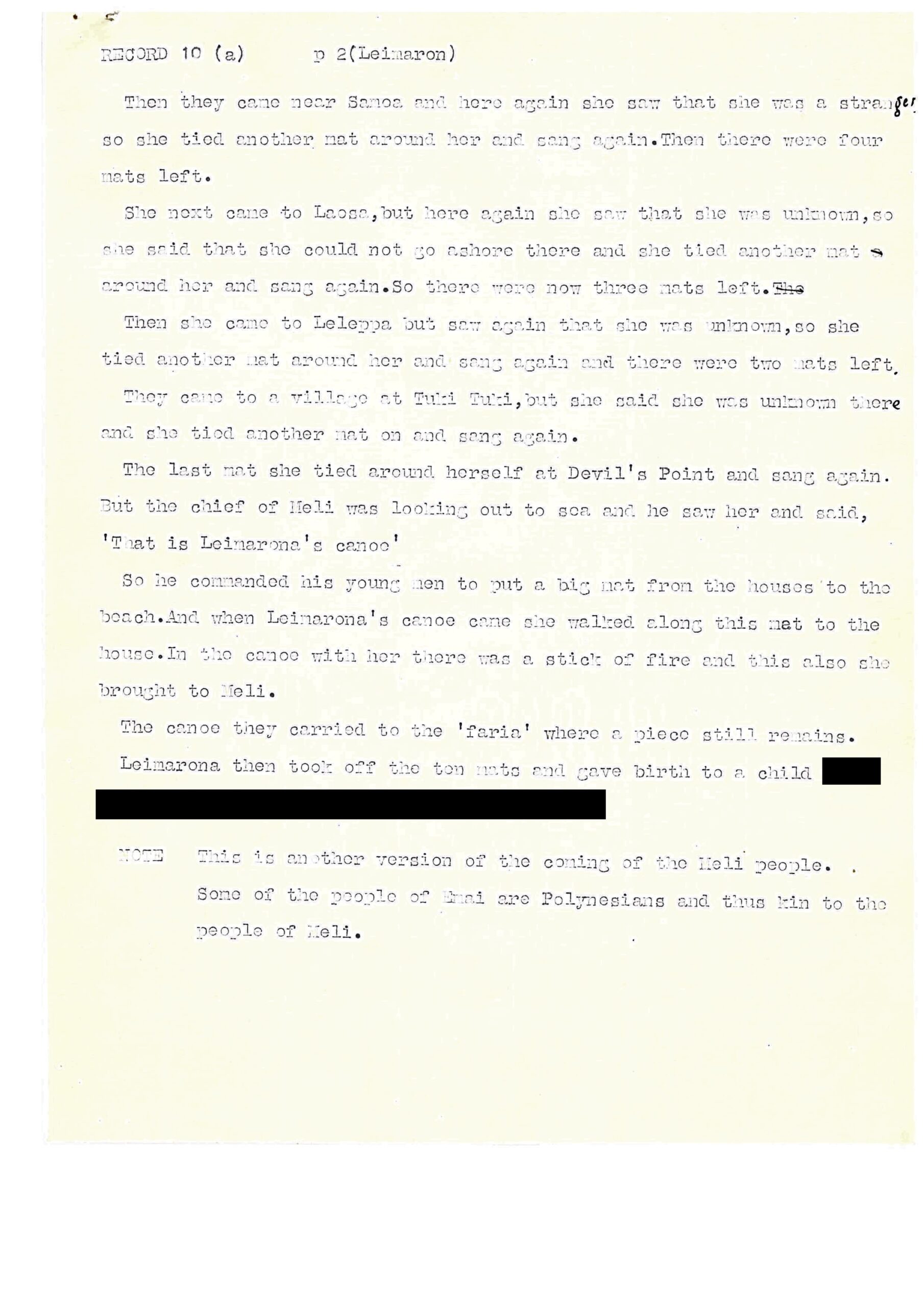 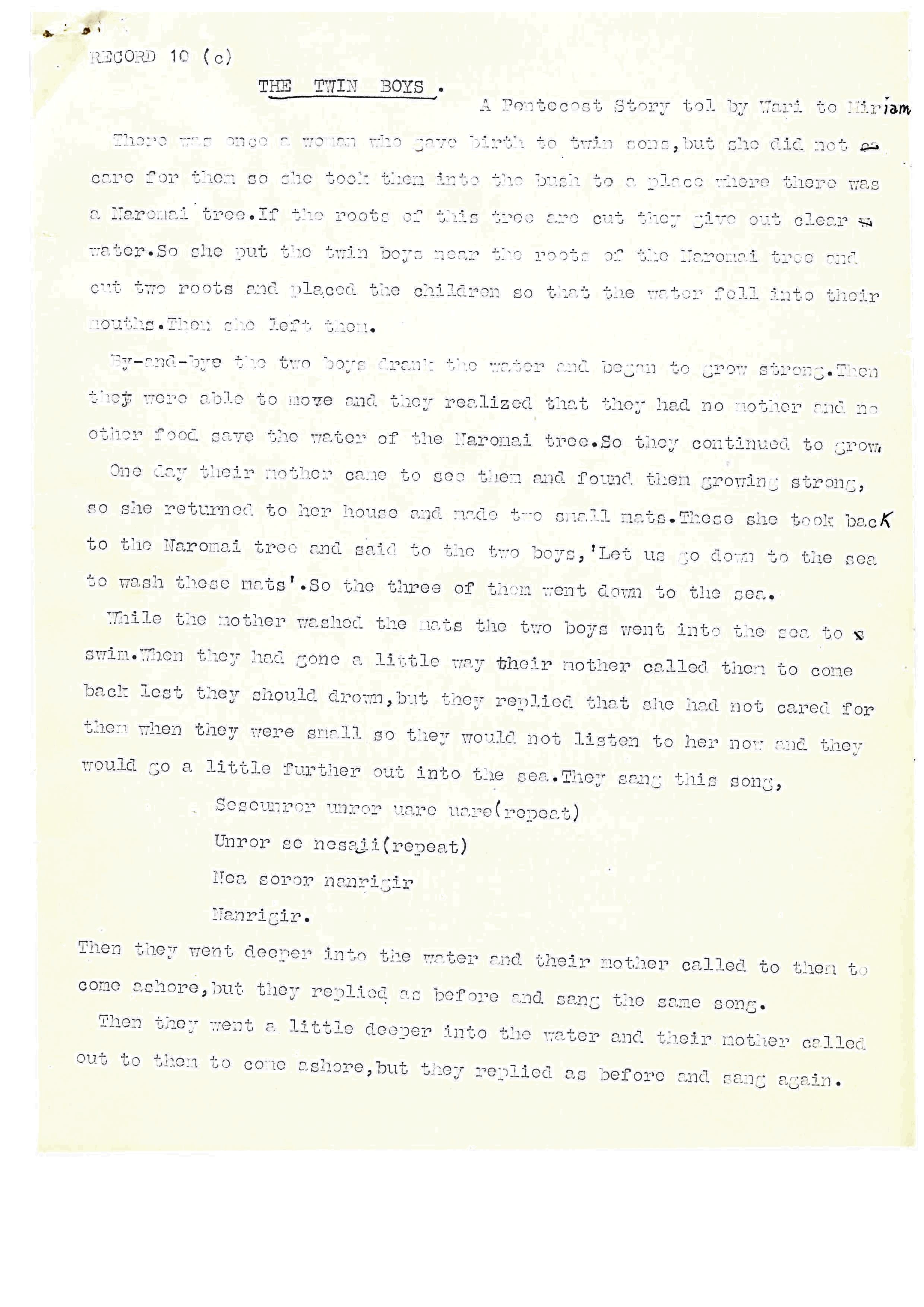 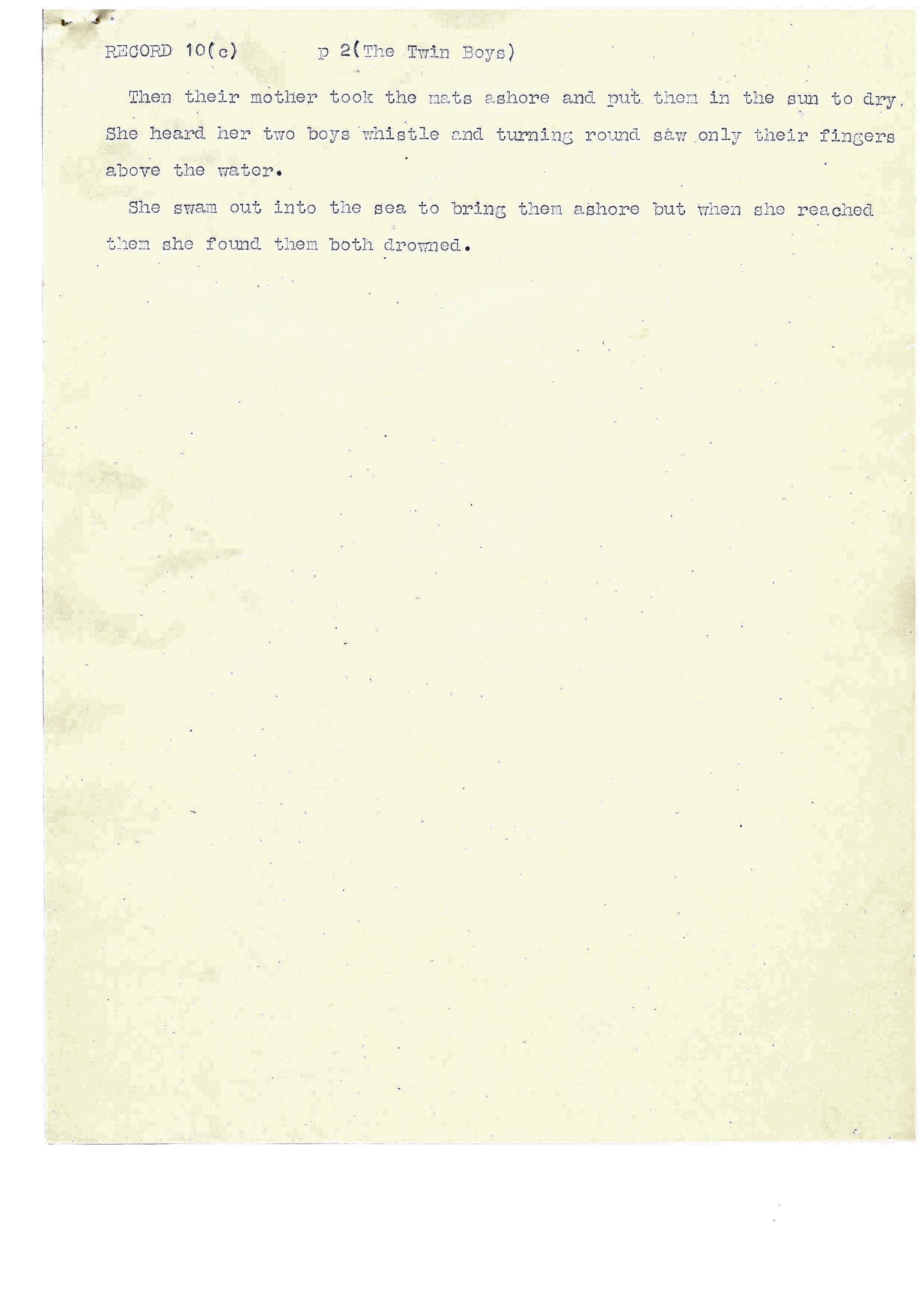   | Related notes, transcriptions and translations held by the British Library Sound Archive | |||||||
| C83/1509 | Goodbye Song / Lusimusua | Kaltaban of Meli (singer, female); unidentified (chorus, female) | Port Vila, Efate, New Hebrides Condominium | January 1924 – June 1924 | 1. Goodbye Song (solo female vocal, unaccompanied). No information available. 2. Lusimusua (female vocal duet?, unaccompanied). No information available. | Singers from Vanuatu; Meli | Good quality recording | Raff, Eric Maitland Kirk (1892-1927) | 5'17" | Eric Raff, 1924 | Black wax cylinder | Eric Raff 1924 Efate, New Hebrides Cylinder Collection | British Library | 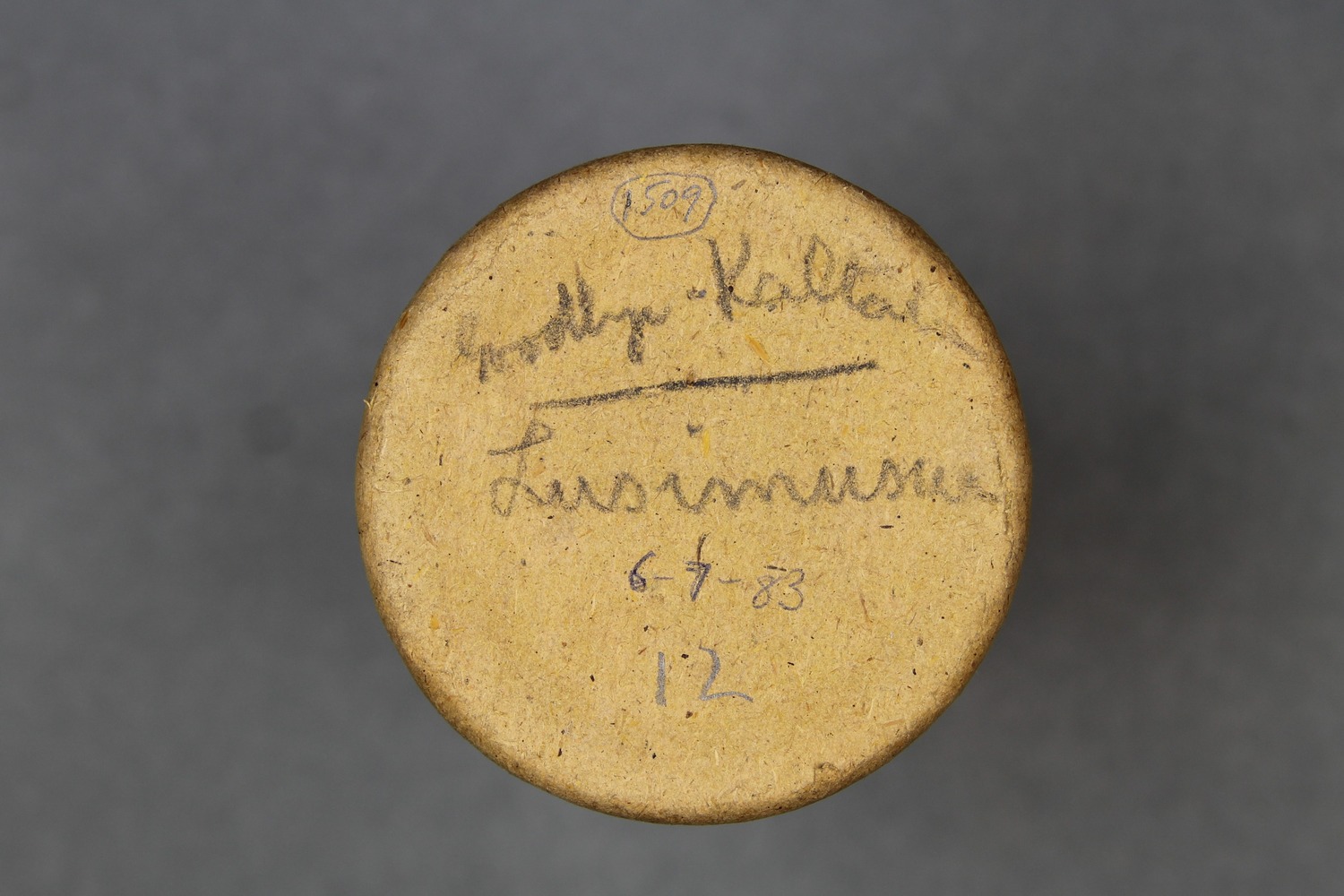 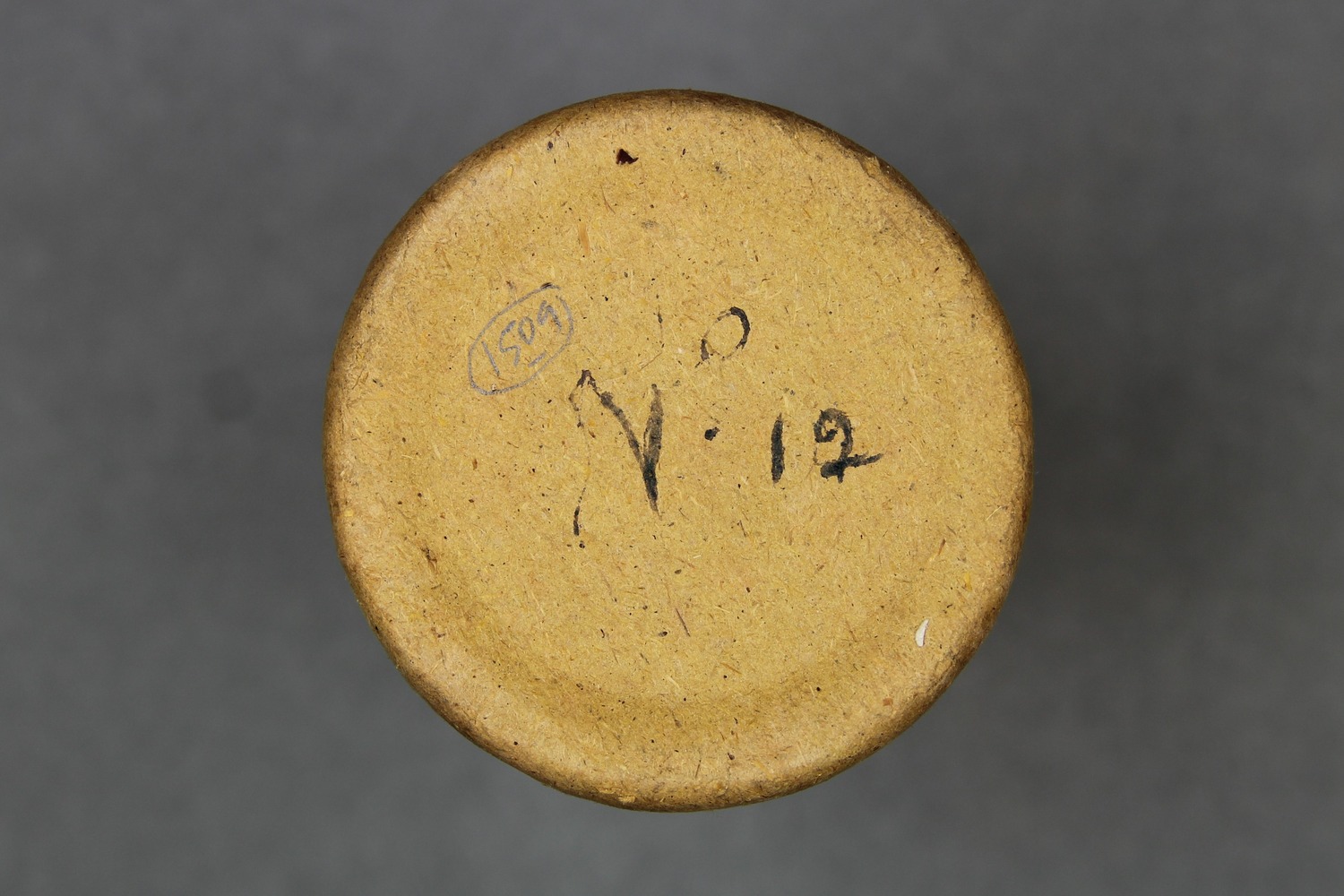     | Related notes, transcriptions and translations held by the British Library Sound Archive | |||||||
| C83/1504 | The Ragged Prince - Tete Go Mama / Atelag | Miriam of Malavau (singer, female) | Port Vila, Efate, New Hebrides Condominium | January 1924 – June 1924 | From Malavau (Efate), Vanuatu | This cylinder is broken and could not be digitised. | Raff, Eric Maitland Kirk (1892-1927) | Eric Raff, 1924 | Black wax cylinder | Eric Raff 1924 Efate, New Hebrides Cylinder Collection | British Library | 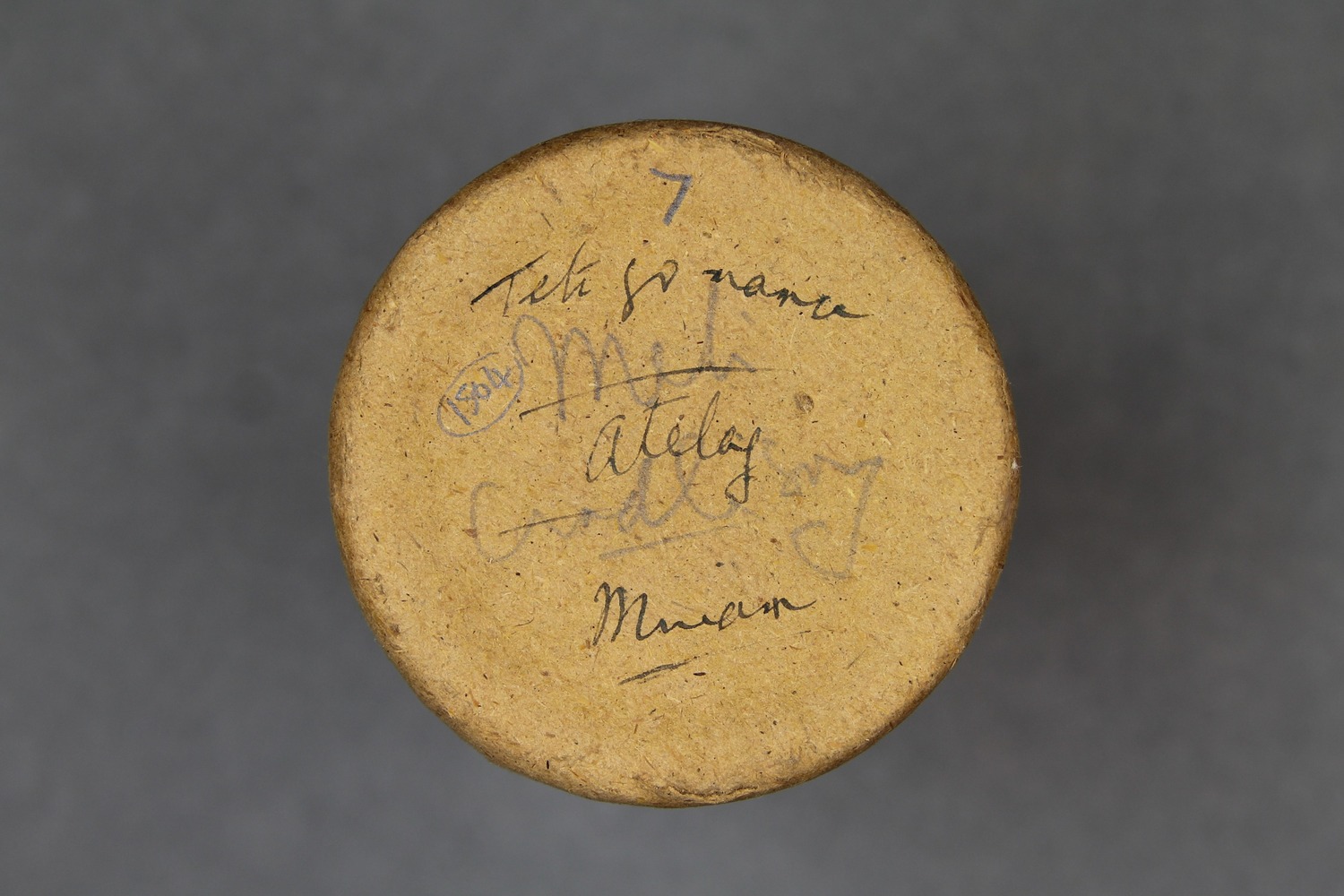  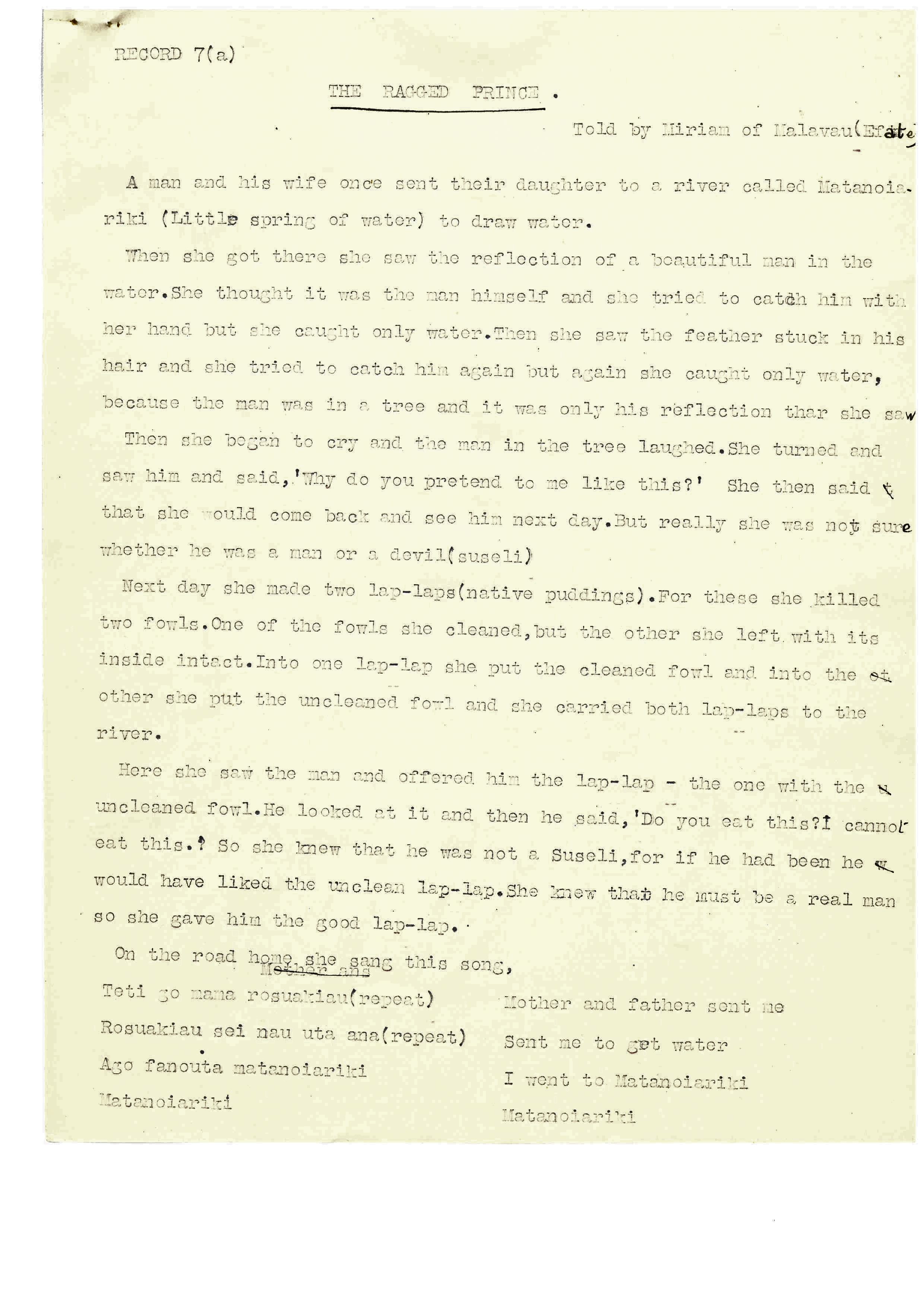 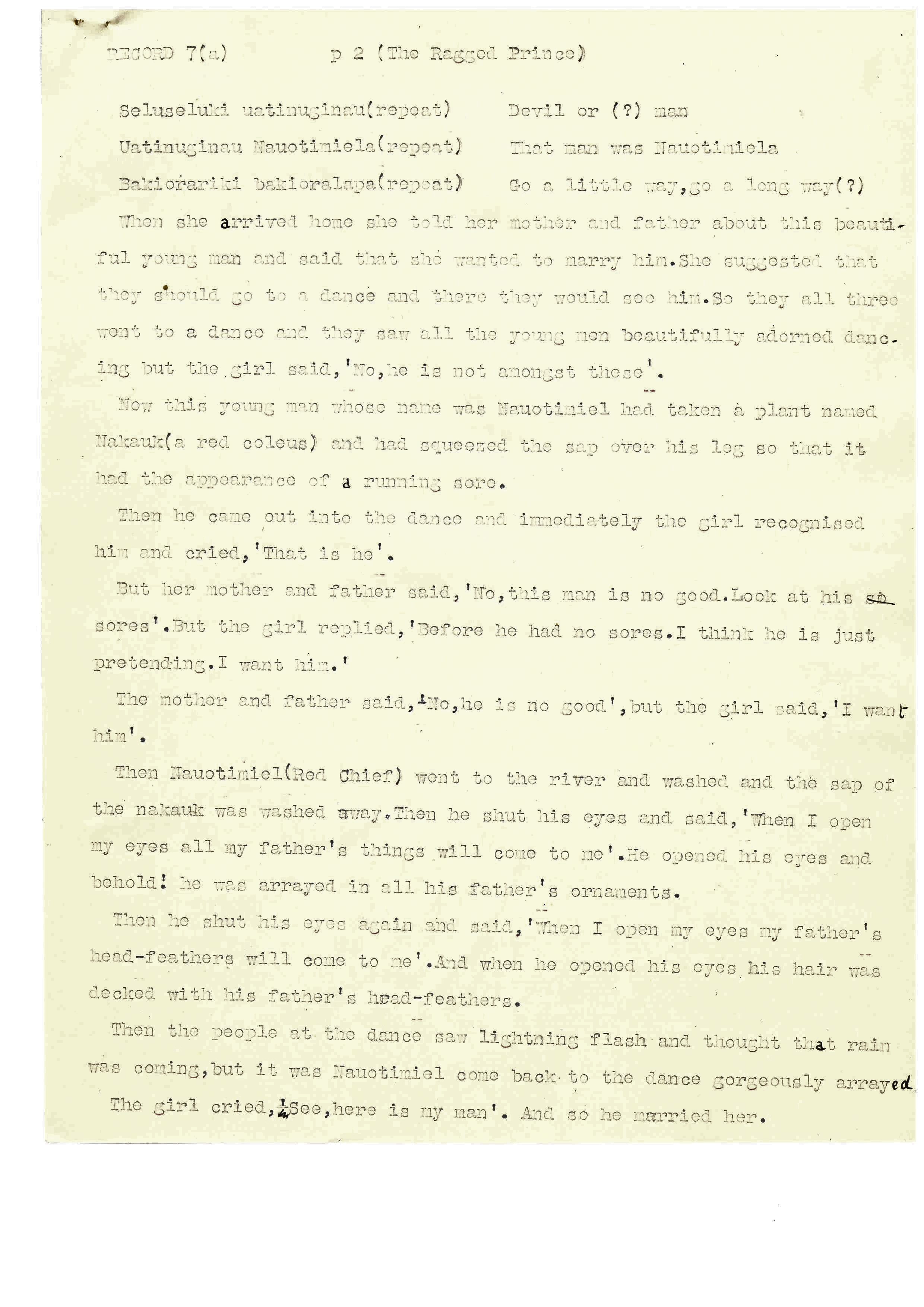   | Notes, transcriptions and translations produced by the recordist, held by the British Library’s Sound Archive | |||||||||
| C83/1506 | Dance Songs | Unidentified | Port Vila, Efate, New Hebrides Condominium | January 1924 – June 1924 | This cylinder is broken and could not be digitised. | Raff, Eric Maitland Kirk (1892-1927) | Eric Raff, 1924 | Black wax cylinder | Eric Raff 1924 Efate, New Hebrides Cylinder Collection | British Library | 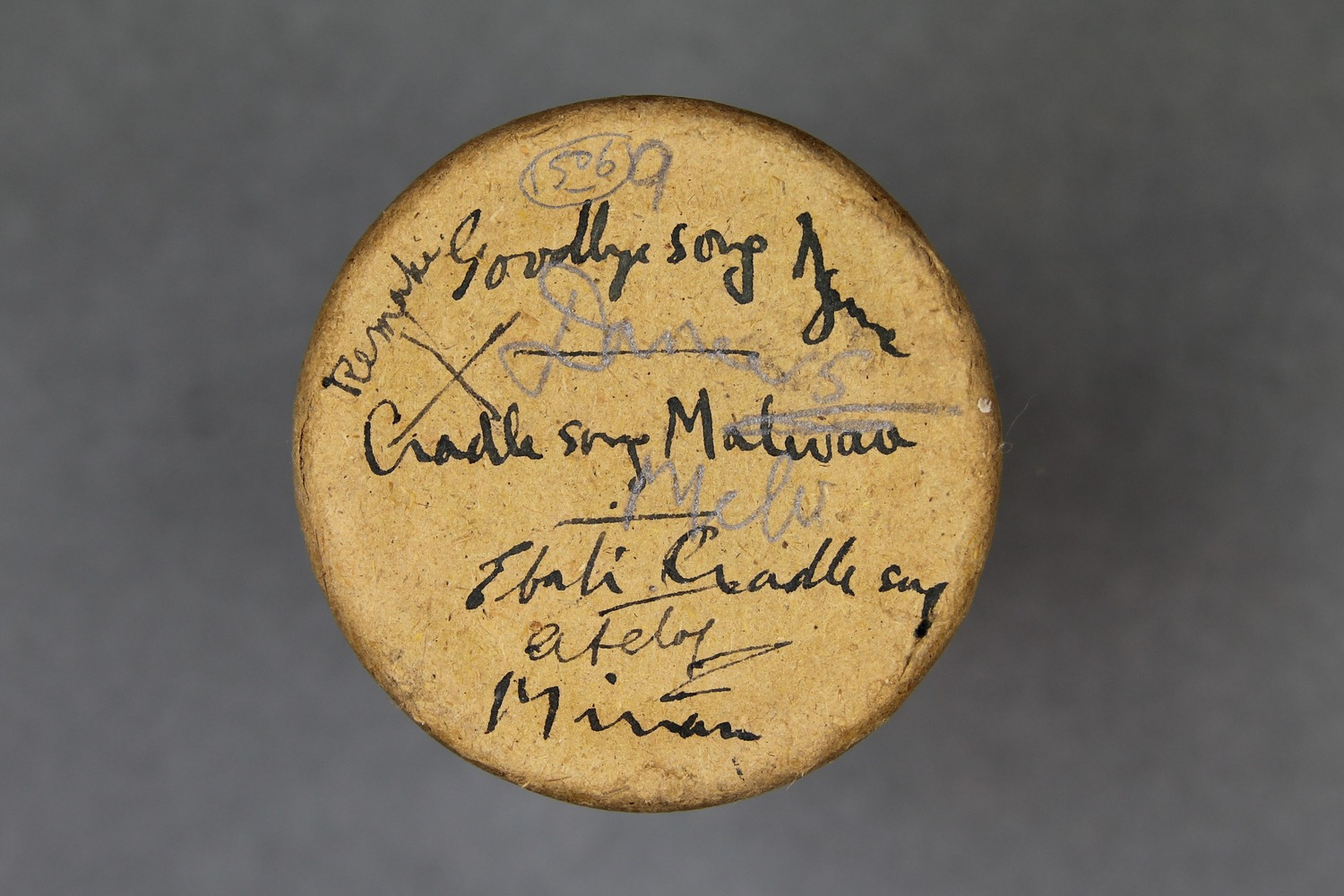 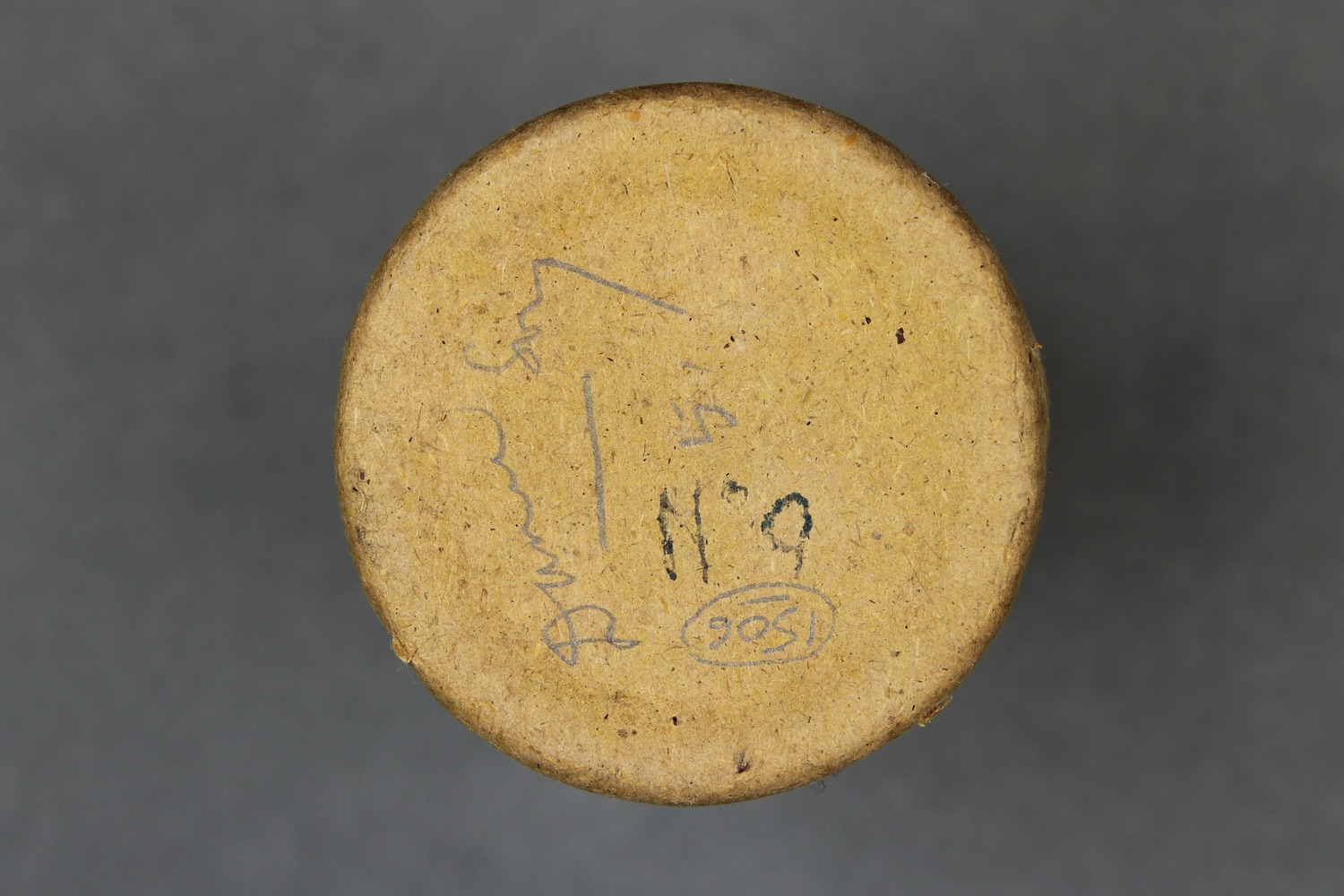 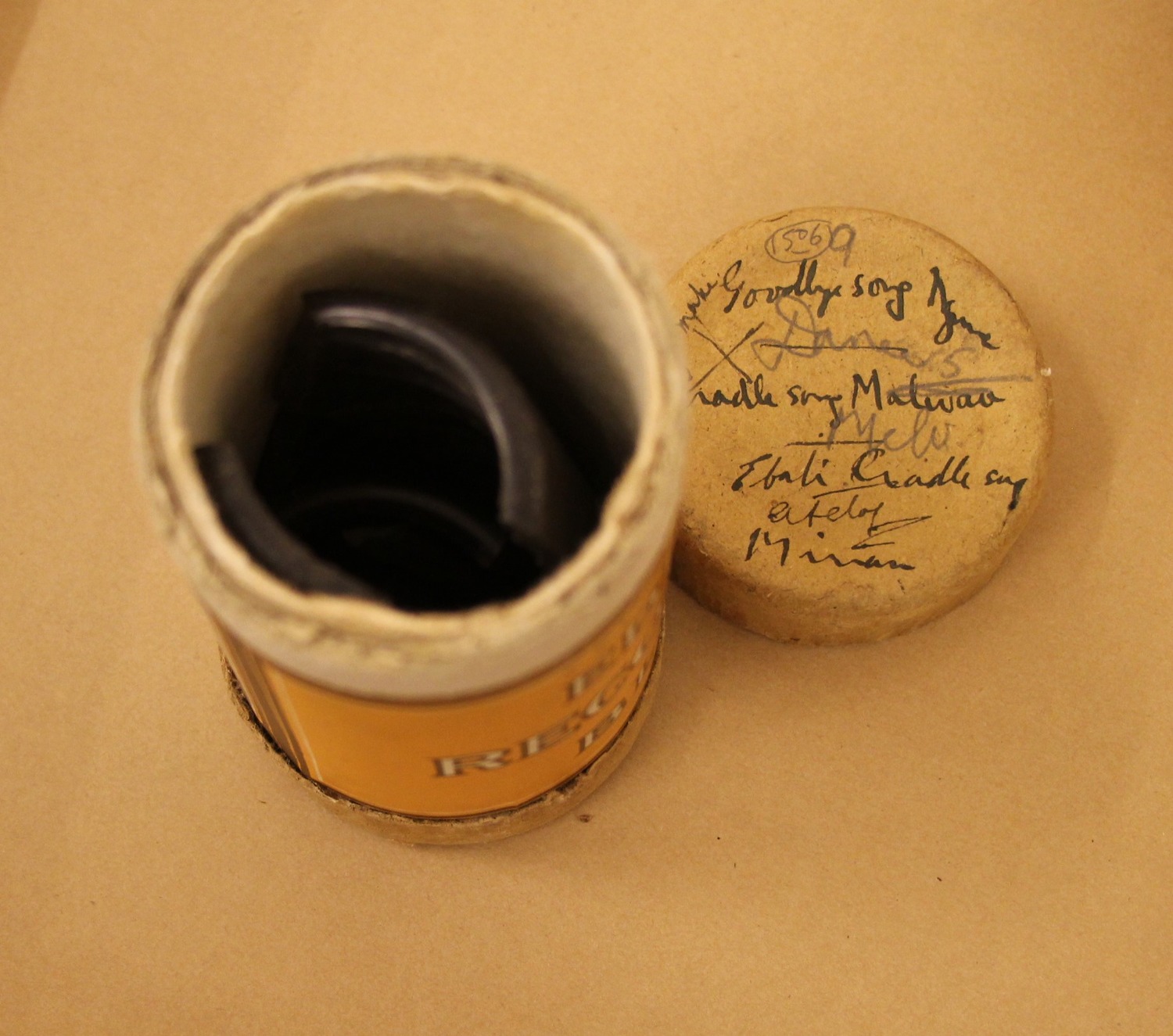     | Notes, transcriptions and translations produced by the recordist, held by the British Library’s Sound Archive | ||||||||||
| C83/1508 | Song - Meny of Fila | Unidentified | Port Vila, Efate, New Hebrides Condominium | January 1924 – June 1924 | This cylinder is broken and could not be digitised. | Raff, Eric Maitland Kirk (1892-1927) | Eric Raff, 1924 | Black wax cylinder | Eric Raff 1924 Efate, New Hebrides Cylinder Collection | British Library | 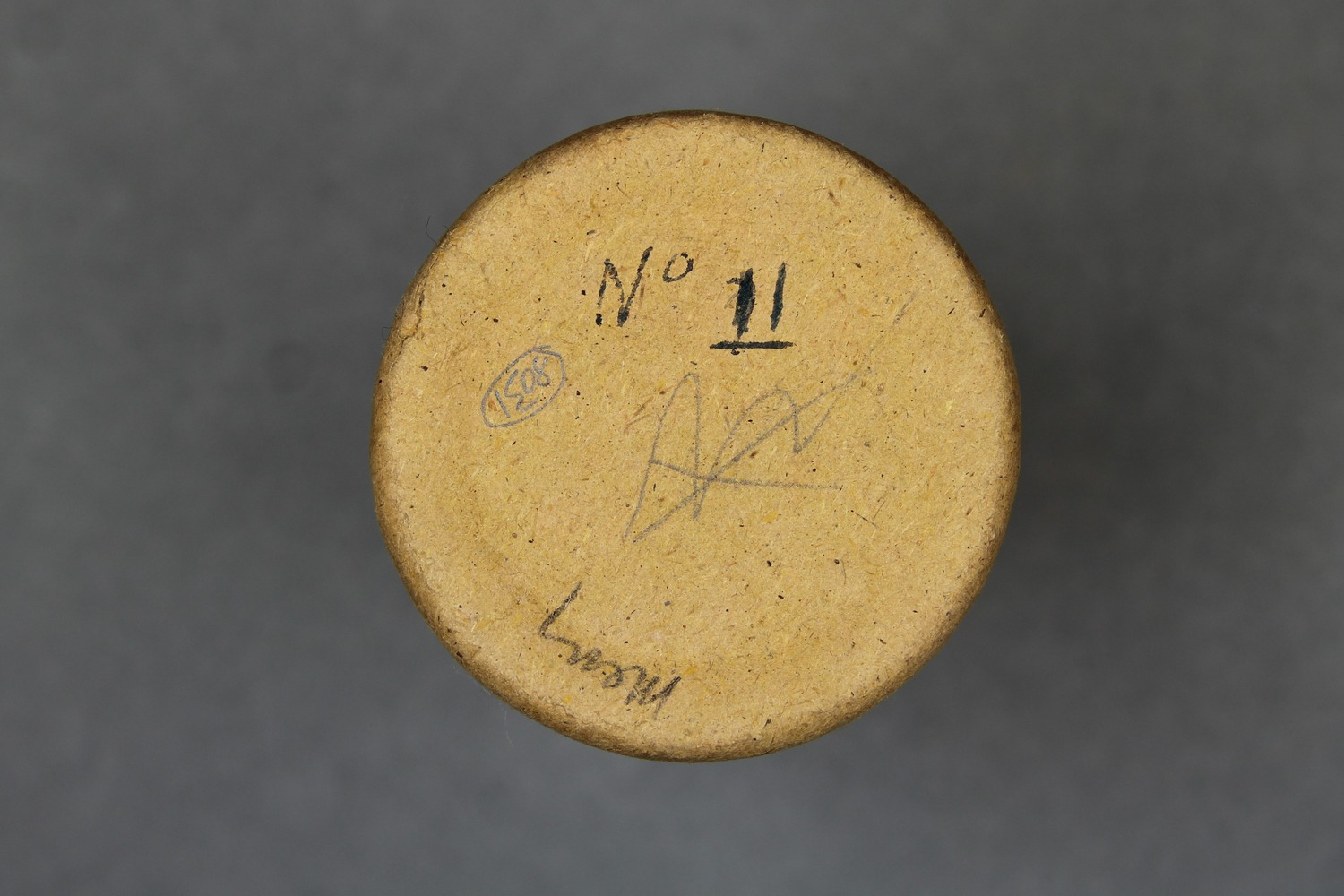 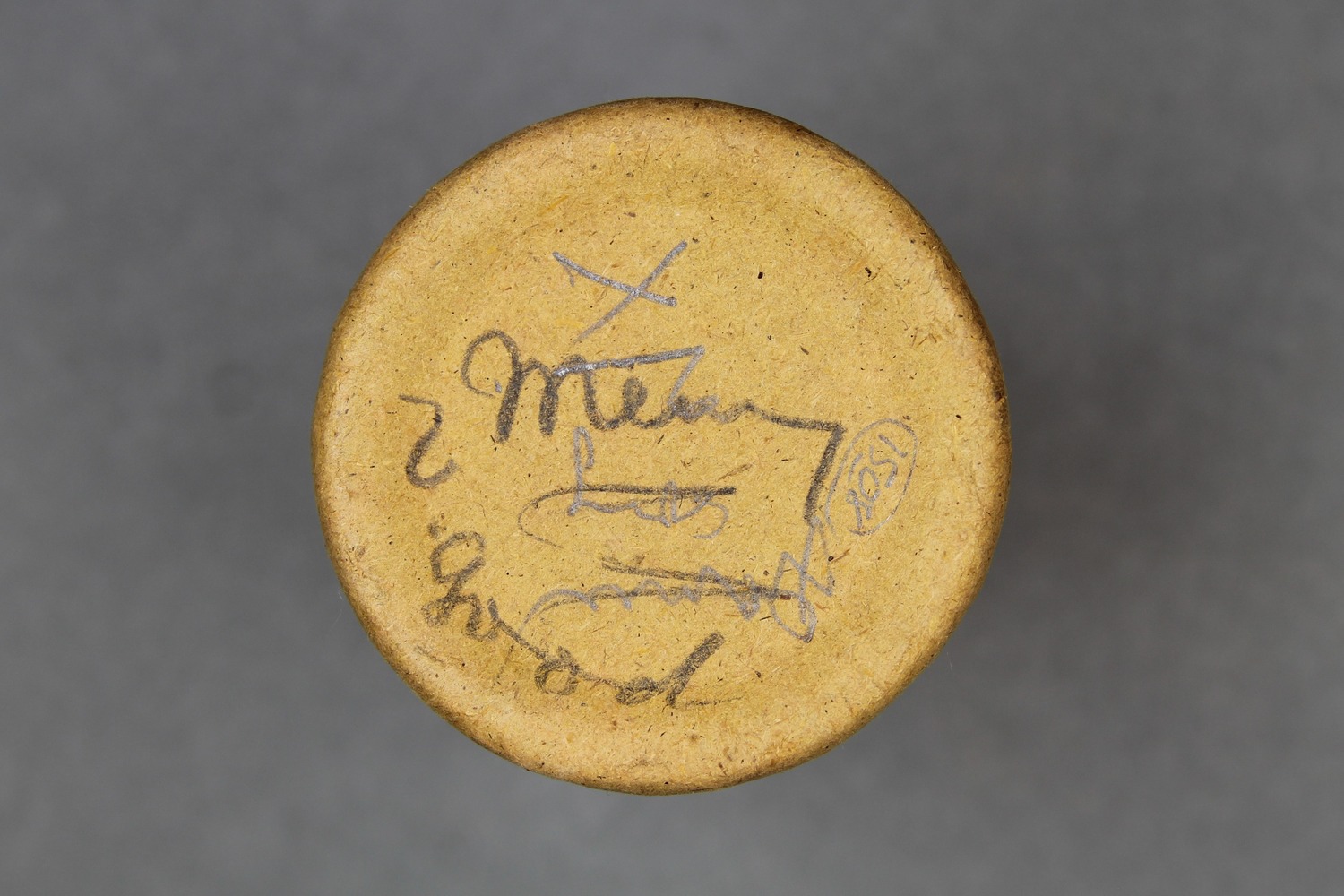     | Notes, transcriptions and translations produced by the recordist, held by the British Library’s Sound Archive |
Performers / Individuals Mentioned
Compared to other early collections of wax cylinder recordings, female performers feature heavily in these recordings. 20 songs were performed by women, and 7 by men; it is not possible to identify the performers’ gender for the others.
In 1923, Eric Raff also made two donations to the National Museum of Victoria in Melbourne, now Melbourne Museum, with his sisters Edith and Janet giving a further 26 artefacts in 1940 and 1963. The material currently in Melbourne came largely from Efate, Santo and Malakula islands, with the addition of a piece of barkcloth identified by Eve Haddow as in the style of Erromango island.
There may be additional information in the British Museum archives on Eric Raff’s correspondence with Joyce in 1926. We will also check for any evidence that the cylinders were purchased or donated to the British Museum in 1927. There may also be additional information from Eric Raff in National Museums Scotland, and in Thurn’s papers in the Royal Anthropological Institute.
| Name | Origin | Images | Recording Date | Recording Trip | Cylinder Number(s) | Description |
|---|---|---|---|---|---|---|
| Kaltaban | Meli, Vanuatu | (No images identified) | 1924 | R.A.I. Vanuatu Cylinder Collection, 1924 | C83/1509 | Performer of one or two songs on C83/1509. Original transcripts note this performer as Kaltaban. Meto Nganga noted that family sources have identified this to be a man by the name of Kaltabanga Sivaleo. He married a woman by the name of Leitanga. They had a daughter who married outside of the village (and island) but there are grandchildren, and there are extended family connections back to Mele (Meto Nganga email to Barnecutt 02 February 2022). |
| Leiboni | Meli, Vanuatu | 1924 | R.A.I. Vanuatu Cylinder Collection, 1924 | C83/1502 | Performer of three songs on C83/1502 with Turi and Tavero. Leiboni was the third daughter of Nganga, the Chief of Mele (Meto Nganga, email to Barnecutt 13 January 2022). She was born on 21 September 1906, and married Saele Taravaki in 1929; they had one son and four daughters, and many living descendant grand and great-grand children. Leiboni died in the 1980s (Meto Nganga, email to Barnecutt 19 January 2022 and 02 February 2022). | |
| Meny | Fila, Vanuatu | (No images identified) | 1924 | R.A.I. Vanuatu Cylinder Collection, 1924 | C83/1508 | Performer on C83/1508 – cylinder broken. |
| Miriam | Malavau, Vanuatu | (No images identified) | 1924 | R.A.I. Vanuatu Cylinder Collection, 1924 | C83/1498, C83/1499, C83/1503, C83/1504, C83/1507 | Female performer on five cylinders, four of which have been digitised (C83/1498, 1499, 1503, 1507) – 14 songs. One cylinder C83/1504 was not digitised because it is broken. |
| Nganga | Vanuatu | 1924 | R.A.I. Vanuatu Cylinder Collection, 1924 | C83/1502 | The transcriptions for the three songs on Record 5, C83/1502, include a translation by ‘Nganga’. Thanks to Meto Nganga, his grandson, for the following information about Nganga. Nganga was ordained as Chief on Mele island on 13 May 1920, although he had been bestowed that rank 3 months earlier on the death of his predecessor on 22 February, 1920 (Meto Nganga email to Barnecutt 02 February 2022). Eric Raff was probably in attendance at the ordination. His chiefly title name was Titongatabu. He was also an Elder of the Presbyterian Church and a teacher, having attended the Presbyterian Teachers Training Institute on Santo from 1901 to 1905. He oversaw the move of the Mele people from the island to the mainland on 28 August,1950. He died on 29 October 1953 (Meto Nganga, email to Barnecutt 19 January 2022). Chief Nganga married Touatmanu and they had nine daughters and one son, Edwin. Edwin and his wife Leimoko had four boys and two girls; Meto Nganga is the eldest son of Edwin and Leimoko. Chief Nganga and Touatmanu have many living descendants (Meto Nganga, email to Barnecutt 19 January 2022). | |
| Pango women | Vanuatu | (No images identified) | 1924 | R.A.I. Vanuatu Cylinder Collection, 1924 | C83/1500 | Performers on one cylinder with four songs (C83/1500). |
| Tavero | Meli, Vanuatu | (No images identified) | 1924 | R.A.I. Vanuatu Cylinder Collection, 1924 | C83/1501, C83/1502 | Male performer; four songs on C83/1501, three songs on C83/1502 with Turi and Leiboni. Biographical details are limited, but he married a woman called Leifori, and they had 4 sons and 2 daughters, all who have died except for their last child and daughter who is still alive. They have living descendants, including grand- and great-grand children (Meto Nganga email to Barnecutt 02 February 2022). |
| Turi | Leleppa | 1924 | R.A.I. Vanuatu Cylinder Collection, 1924 | C83/1502 | Male performer; three songs on C83/1502 with Leiboni and Tavero. Turi or Tur (of Lelepa) is a name specific to one clan or naflak – the long yam naflak of Creek Ai (Ballard email to Barnecutt, 21 May 2021). Turi was related to Nganga, the Chief of Mele, and there are still relations between the families today. Turi and his wife Tousakau had eight children, four boys and four girls, and he later became the Chief of Lelepa, with the chiefly title of Maasiia. He has living descendants (Meto Nganga email to Barnecutt, 25 January 2022). |
Cylinders
The cylinders are black wax cylinders, and their boxes are labelled with yellow ‘Edison Recording Blank’ labels. Most or all of the other black wax cylinders at the British Library were moulded in Berlin from a recorded original via a galvano,2https://www.iasa-web.org/tc05/2111-cylinders rather than cut directly (Will Prentice email to Barnecutt, 22 April 2021), but the archival information indicates that these cylinders were blanks when they were used for recording. These cylinders are unusual in that they were recorded on a machine which recorded at 200 TPI (turns per inch), rather than the more usual 100 TPI. This means the cylinders have an increased playing time due to the grooves being packed more tightly together. The playing time of these recordings ranges from 3 minutes 56 seconds to 5 minutes 52 seconds; the more usual 100 TPI cylinders have an average playing time of 2 minutes.
Edison produced a phonograph that recorded at 200 TPI between 1893 and 1895 that was intended for dictation purposes,3https://sounds.bl.uk/Sound-recording-history/Equipment/029M-7XFROWX1989X-0001V0 and the Model K phonograph around 1908–1909.4https://sounds.bl.uk/Sound-recording-history/Equipment/029M-9XFROWX1991X-0004V0 He needed a “very hard and tough” material for these 200 TPI cylinders, but refused to pay for a licence to use celluloid (Klinger 2007:14). These cylinders were called Edison Amberol Records, and they were marketed as being the longest playing record of any kind. However, the wax was hard, but too brittle, and customers found that they wore out, mis-tracked and fractured easily.5https://www.loc.gov/static/programs/national-recording-preservation-board/documents/klinger.pdf Complaints forced Edison to switch to celluloid, and the Edison Blue Amberol Record was developed.
The appearance of the cylinders in the collection indicates that they were the early Edison Amberol Records, which helps explain why three of the 12 are broken. The fact that the recordings were made in 1924 suggests that Eric used a Model K phonograph, but we do not know where he obtained either the phonograph or the cylinder blanks.
Labelling
The cylinder boxes do not have labels, but information is recorded in handwriting and in pencil in what seems to be two different handwriting styles, across the tops of the lids. This corresponds with the typed transcriptions and translations in most cases, although there are some notes missing and some broken cylinders. The handwritten corrections on the typed transcripts and translations were probably written by Ruth Raff as she typed the notes.
Most of the lids and bases also contain the four-digit shelfmark of the cylinder (e.g., 1498), and the date that the cylinder was dubbed is also on the lids. This information was added by the British Library.
- Ballard, Chris and Nicholas Thieberger. 2006. ‘Language and Ethnography on the Mission Frontier: Daniel Macdonald at Havannah Harbour, 1872–1905.’ Paper presented at the 2nd Australian National University Missionary History Conference, ’Asia-Pacific missionaries: At home and abroad,’ August 2006.
- Capell, Arthur. 1942. ‘Notes on the Fila language, New Hebrides.’ Journal of the Polynesian Society 51: 153–180.
- Clark, Ross. 1998. A Dictionary of the Mele Language (Atara Imere), Vanuatu. Pacific Linguistics. Canberra: ANU Press.
- Eberhard, David M., Gary F. Simons, and Charles D. Fennig (eds.). 2021. Ethnologue: Languages of the World. 24th edition. Dallas, Texas: SIL International.
- Joyce, Thomas Atholl. 1926. ’T.A. Joyce, Dept. of Ceramics and Ethnography, British Museum to Rev. E.M. Raff.’ Ethnomusicology Committee. Wiley Digital Archives: The Royal Anthropological Institute of Great Britain and Ireland. No Date. http://WDAgo.com/s/5bb00889. Accessed 8 June 2021.
- Lacrampe, Sebastien. 2017. Description and Documentation of Lelepa, an Endangered Language of Central Vanuatu. Endangered Languages Archive. http://hdl.handle.net/2196/00-0000-0000-000F-BAF7-9. Accessed on 4 May 2021.
- Macdonald, Daniel. 1898. ‘The mythology of the Efatese’. Paper read at the Australasian Association for the Advancement of Science. Australasian Association for the Advancement of Science 7:759-768
- Malau, Catriona. 2018. Documentation of Ifira-Mele, a Polynesian Outlier of Vanuatu. Endangered Languages Archive. http://hdl.handle.net/2196/00-0000-0000-0010-AB1B-8. Accessed on 4 May 2021.
- Miller, John Graham. 1987. ‘Book Five – The Central Islands, Efate to Epi, from 1881-1920’, in Live: A History of Church Planting in the Republic of Vanuatu. Port Vila, Vanuatu: Presbyterian Church of Vanuatu
- Milne, William. 1918a. Letter from William Milne to Alexander Don, 8 January 1918. Presbyterian Research Centre archives GA0146 New Hebrides Mission – Staff Files – Rev WV Milne 1915 to 1919. 2/8 1984/0018 AA13/116. Emailed to Barnecutt 22 August 2021.
- Milne, William. 1918b. Letter from William Milne to Alexander Don, 28 October 1918. Presbyterian Research Centre archives GA0146 New Hebrides Mission – Staff Files – Rev WV Milne 1915 to 1919. 2/8 1984/0018 AA13/116. Emailed to Barnecutt 22 August 2021.
- Milne, William. 1919a. Letter from William Milne to Alexander Don, 8 February 1919. Presbyterian Research Centre archives GA0146 New Hebrides Mission – Staff Files – Rev WV Milne 1915 to 1919. 2/8 1984/0018 AA13/116. Emailed to Barnecutt 22 August 2021.
- Milne, William. 1919b. Letter from William Milne to Alexander Don, 4 March 1919. Presbyterian Research Centre archives GA0146 New Hebrides Mission – Staff Files – Rev WV Milne 1915 to 1919. 2/8 1984/0018 AA13/116. Emailed to Barnecutt 22 August 2021.
- Naupa, Anna Uruknte. 2004. ‘Negotiating Land Tenure: Cultural Rootedness in Mele, Vanuatu.’ MA thesis, University of Hawai’i.
- Raff, Ruth. 1927a. Letter from Mrs Ruth Raff to Sir Everard im Thurn , 27 March 1927. Ethnomusicology Committee. Wiley Digital Archives: The Royal Anthropological Institute of Great Britain and Ireland. http://WDAgo.com/s/47577a34. Accessed 8 June 2021.
- Raff, Ruth. 1927b. Letter from Mrs. Ruth Raff to Sir Everard im Thurn, 14 April 1927. Ethnomusicology Committee. Wiley Digital Archives: The Royal Anthropological Institute of Great Britain and Ireland. http://WDAgo.com/s/3bf69adf. Accessed 8 June 2021.
- Raff, Ruth. 1927c. Letter from Mrs. Ruth Raff to Sir Everard im Thurn, 8 May 1927. Ethnomusicology Committee. Wiley Digital Archives: The Royal Anthropological Institute of Great Britain and Ireland. http://WDAgo.com/s/4ccaadc9. Accessed 8 June 2021.
- Raff, Ruth. 1927d. Letter from Mrs Ruth Raff to Sir Everard im Thurn, 10 May 1927. Ethnomusicology Committee. Wiley Digital Archives: The Royal Anthropological Institute of Great Britain and Ireland. http://WDAgo.com/s/211a4c36. Accessed 8 June 2021.
- Speiser, Felix. 1996. Ethnology of Vanuatu. Bathurst: Crawford House Publishing (originally published 1923).
- Thieberger, Nick. 2004. ‘Topics in the Grammar and Documentation of South Efate, an Oceanic Language of Central Vanuatu.’ PhD thesis, University of Melbourne.
- Thieberger, Nick, and Chris Ballard. 2008. ‘Daniel Macdonald and the “Compromise Literary Dialect” in Efate, Central Vanuatu.’ Oceanic Linguistics 47(2): 365–382. https://www.jstor.org/stable/20542820?seq=1 Accessed 8 June 2021.
- Thurn, Everard im. 1927. Letter from Sir Everard im Thurn to Mrs Raff, 29 March 1927. Ethnomusicology Committee. Wiley Digital Archives: The Royal Anthropological Institute of Great Britain and Ireland. http://WDAgo.com/s/0ab2924b. Accessed 8 June 2021.





